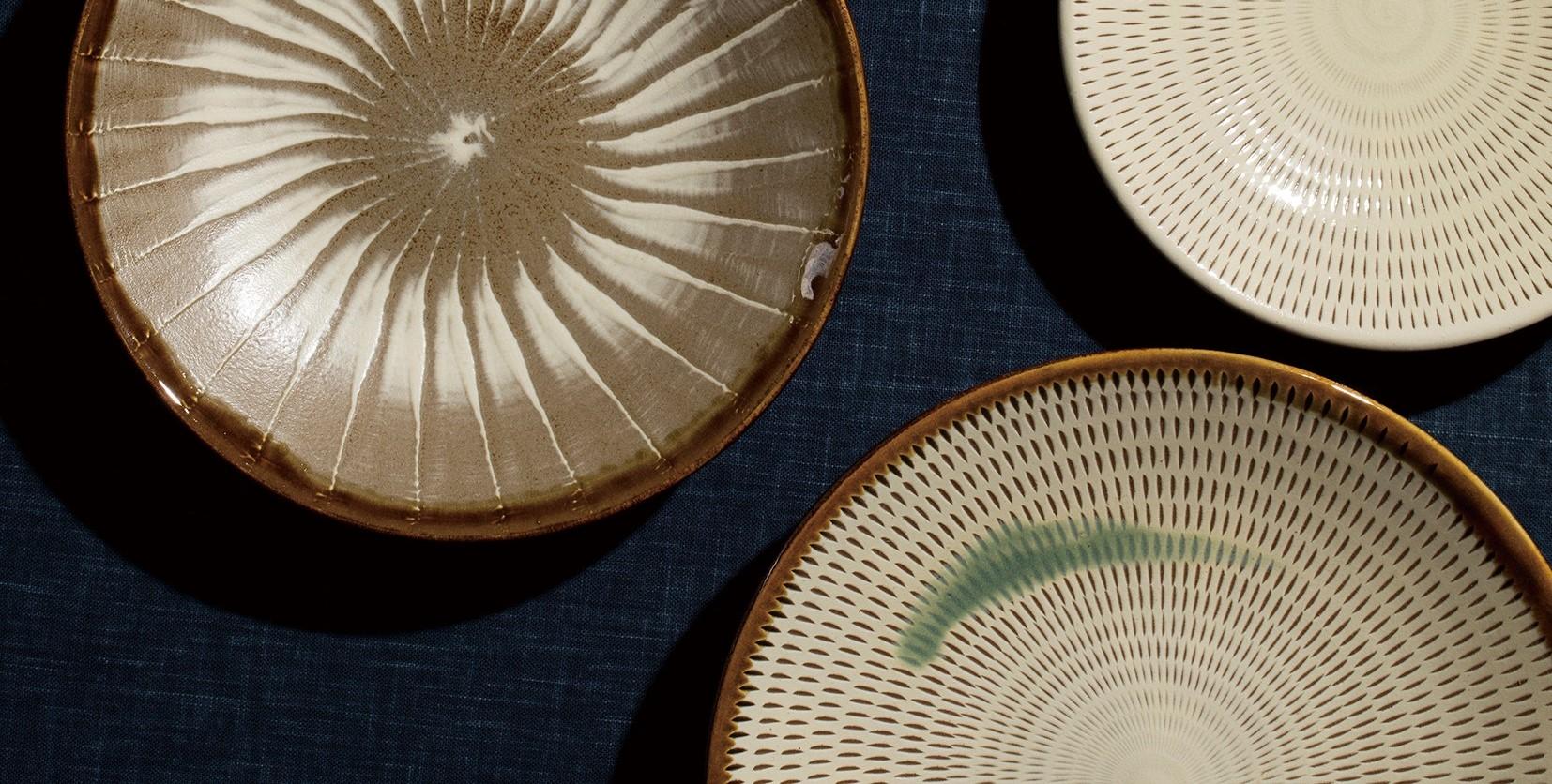
Koishiwarayaki
The essence of Koishiwarayaki ceramics' rustic design and texture is immediately recognizable
The origin of Koishiwarayaki pottery was when the 3rd lord of the Chikuzen Fukuoka clan, following Imari's popularity in porcelain production, began making pottery in 1682. When the kiln was first opened, there was a time when porcelain was made but they came to make ceramics through developments from exchange with Takatori-yaki ceramics of the same region which had been used for tea dishes since 1669. The main feature of Koishiwarayaki is the regular pattern put in systematically using a brush or edge of a blade while the vessel turns on the wheel. Techniques called "tobiganna" (literally flying planes) and "hakeme" (brush eye) are used to create a pattern that is neat but warm. These various pieces for daily use have been made continuously through every era and they are still loved by people all over Japan.
From the satoyama villages near the mountains to the whole country. Representative dishes to color daily life.
The Koishiwara area is located inland and is a place rich in nature surrounded by 1000 meter high mountains. Agriculture is also thriving and the peaceful classical Japanese landscape spreads out with terraced rice paddies and houses with thatched roofs. Because this Koishiwara area is blessed with clay soil suitable for ceramics and trees providing wood to fuel the climbing kilns, pottery making has continued for roughly 350 years. Now, there are more than 50 pottery studios gathered and each has its own gallery. It is also a pleasure to tour various pottery studios and experience the different styles of each artist. Additionally, since Koishiwara has so many studios, if the timing is right, you can also have the unique opportunity of seeing the artists at work. During the season, many people flock to the festivals held in spring and autumn. Please come to experience these various forms, which have warm designs and affordability perfect for everyday use, in the place where they are produced.
Koishiwarayaki ceramics are made in the village of Toho, which is rich in nature and surrounded by mountains. The peaceful atmosphere is calming and well suited to the sun-drying dishes.
Long ago, there was great demand for large pots and dishes and they were fired in wood-burning climbing kilns. Now, gas kilns are widely used but we cannot help but feel the history and tradition of the huge climbing kilns. On the other hand, the clay soil, an important raw material, is still collected from neighboring mountains, just as it was in the past.
In the Koishiwara area, there is also the teapot studio of Takatoriyaki ceramics, which was counted among the Enshu Nanagama (or the Seven Kilns of Enshu). Because its history is older than that of Koishiwarayaki, it is said that Takatori-yaki had a great influence on what has become the current style of Koishiwarayaki.
01/ The raw material of Koishiwarayaki is the red clay collected from the mountains of the area. This clay creates a rustic texture.
02/ In the technique called "tobiganna," white glaze is put over the red clay and a regular pattern is cut into the glaze with the tip of a blade.
03/ Before the glaze dries, a pattern is made with a brush for "hakeme."
04/ According to the techniques of "tobiganna" and "hakeme," traditional patterns of Koishiwarayaki are carved.
Some Koishiwarayaki pottery studios still use climbing kilns now. It is said that firing with wood fuel creates a unique expression in the dishes. It is impressive to see shimenawa (sacred shinto ropes) hanging from some kilns due to the idea that gods live in them. It is said that no matter how skillful the potter is, the firing cannot be predicted. Don’t you agree that this is one of the fascinations of pottery?
After putting the fire in the kiln, in a few days the kiln is opened. While the temperature inside has gone down, it is still hot to go inside and you can understand the magnitude of the level of heat used for firing.
Every year in May and October, to coincide with the opening of the kilns, pottery festivals are held. In addition to the array of new pieces, there is also the opportunity to buy pottery for more reasonable prices than usual and the festivals are bustling with people from both inside and outside Fukuoka prefecture.
01~05/Koishiwara Pottery Series created through a collaboration between pottery studio and food coordinator.
07~09/The stark contrast of black and white is the point that makes these different from conventional Koishiwarayaki.
-
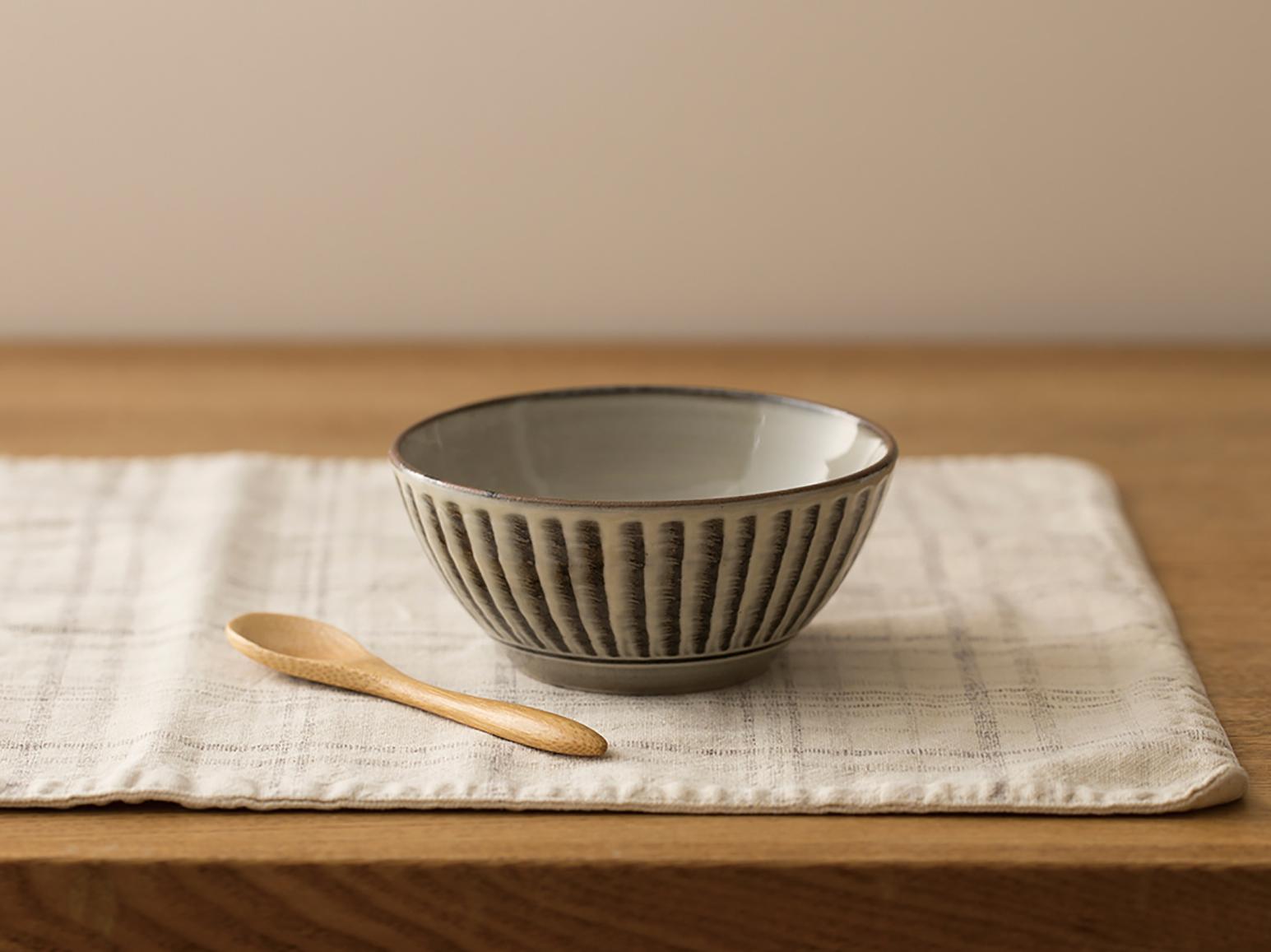
01.Soup bowl using hakeme technique.
-
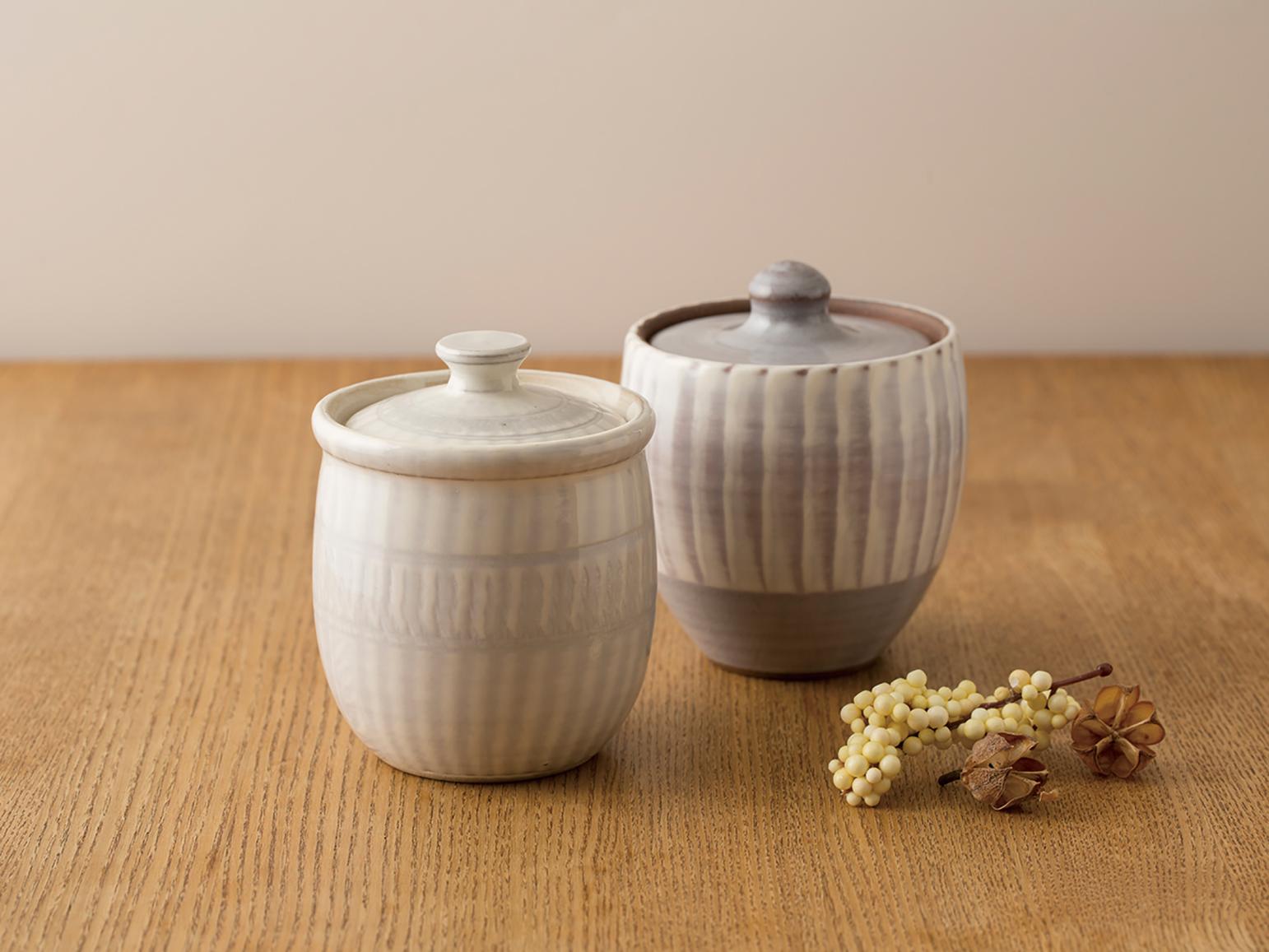
02.Pot with a lid with a light glaze over hakeme.
-
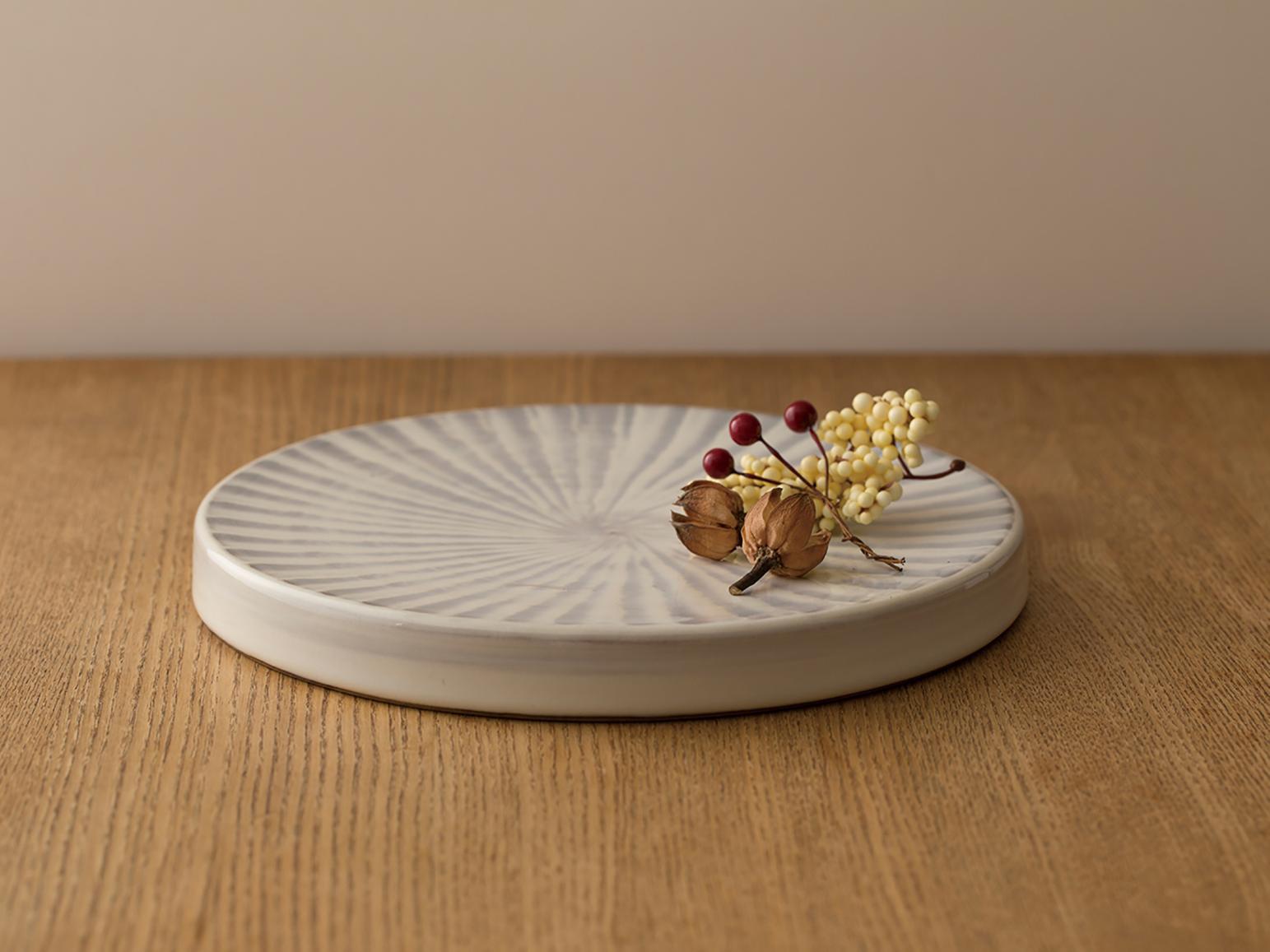
03.Cheese board.
-
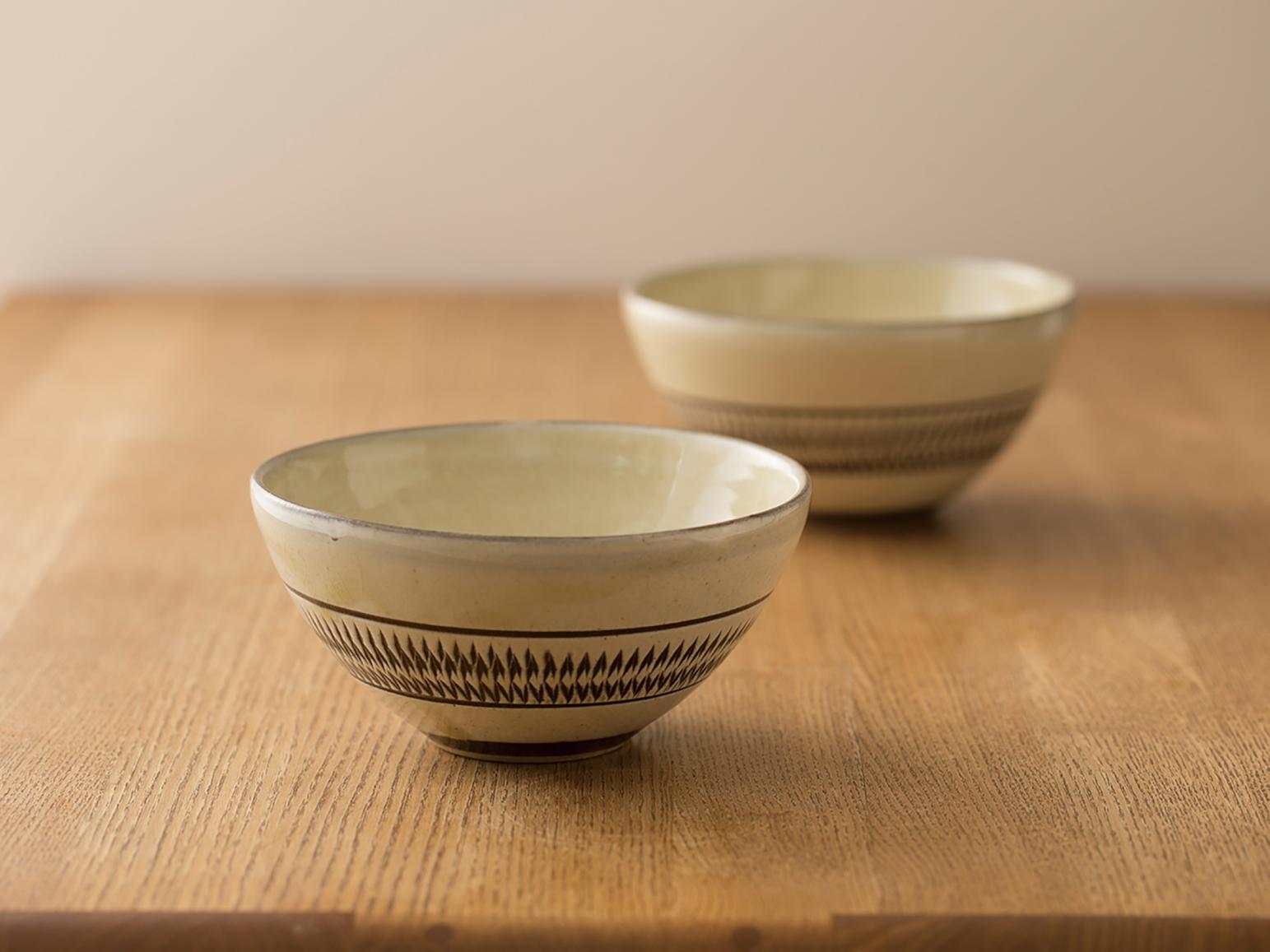
04.Soup bowl with the symbolic regular pattern of the tobiganna technique.
-
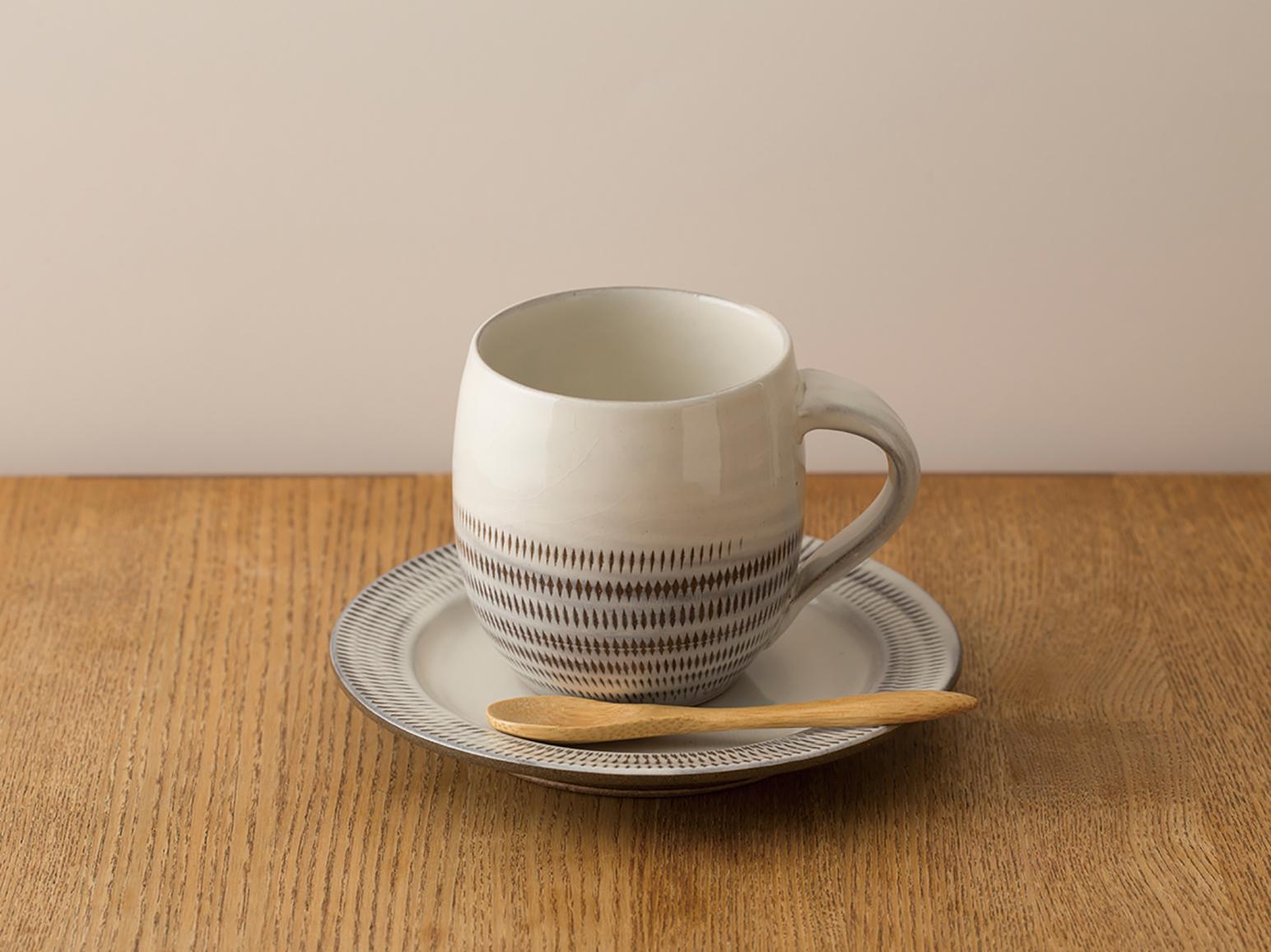
05.Cup. With a small bread plate for a saucer.
-
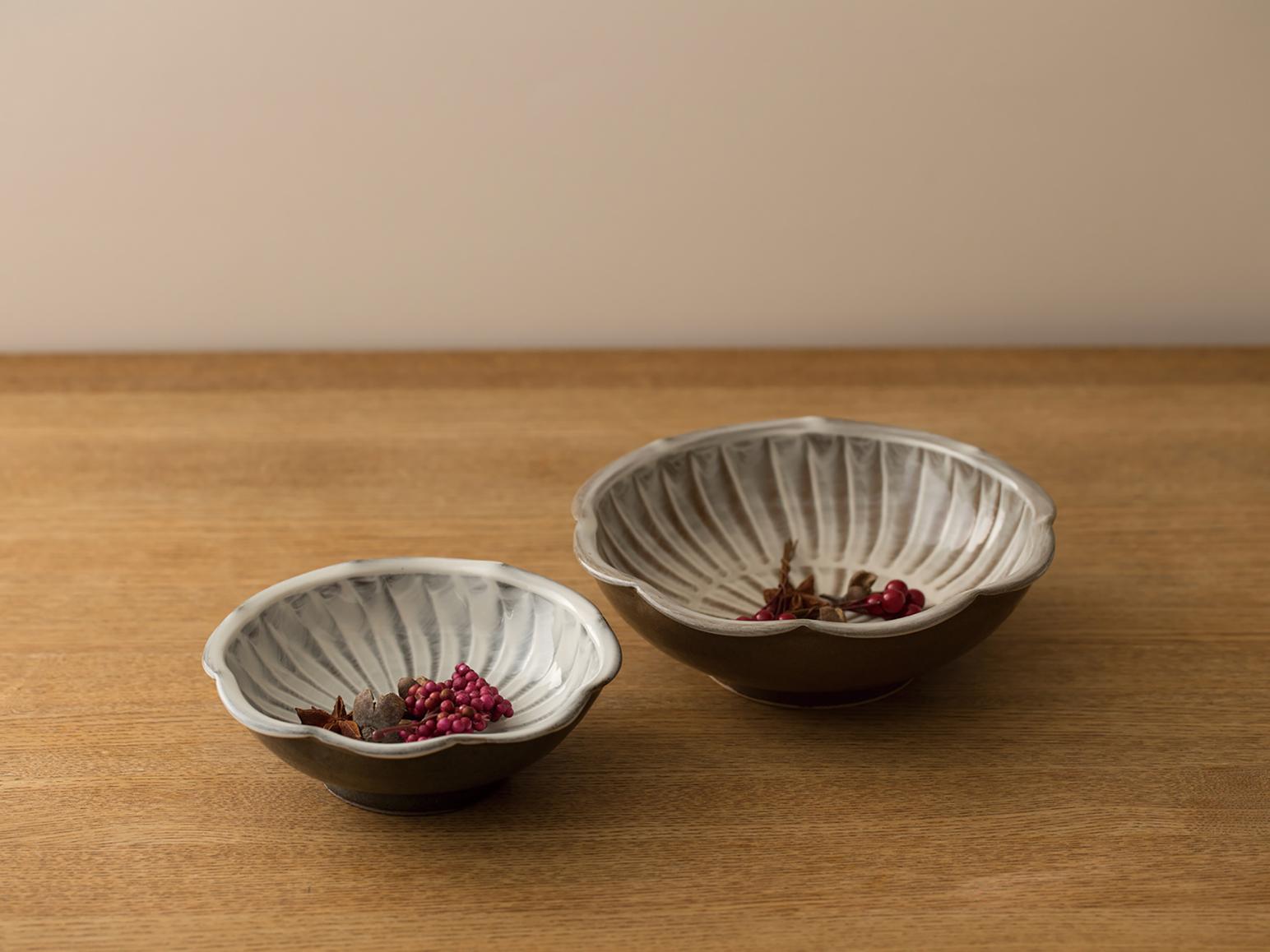
06.Small dish with a flower shape motif.
-
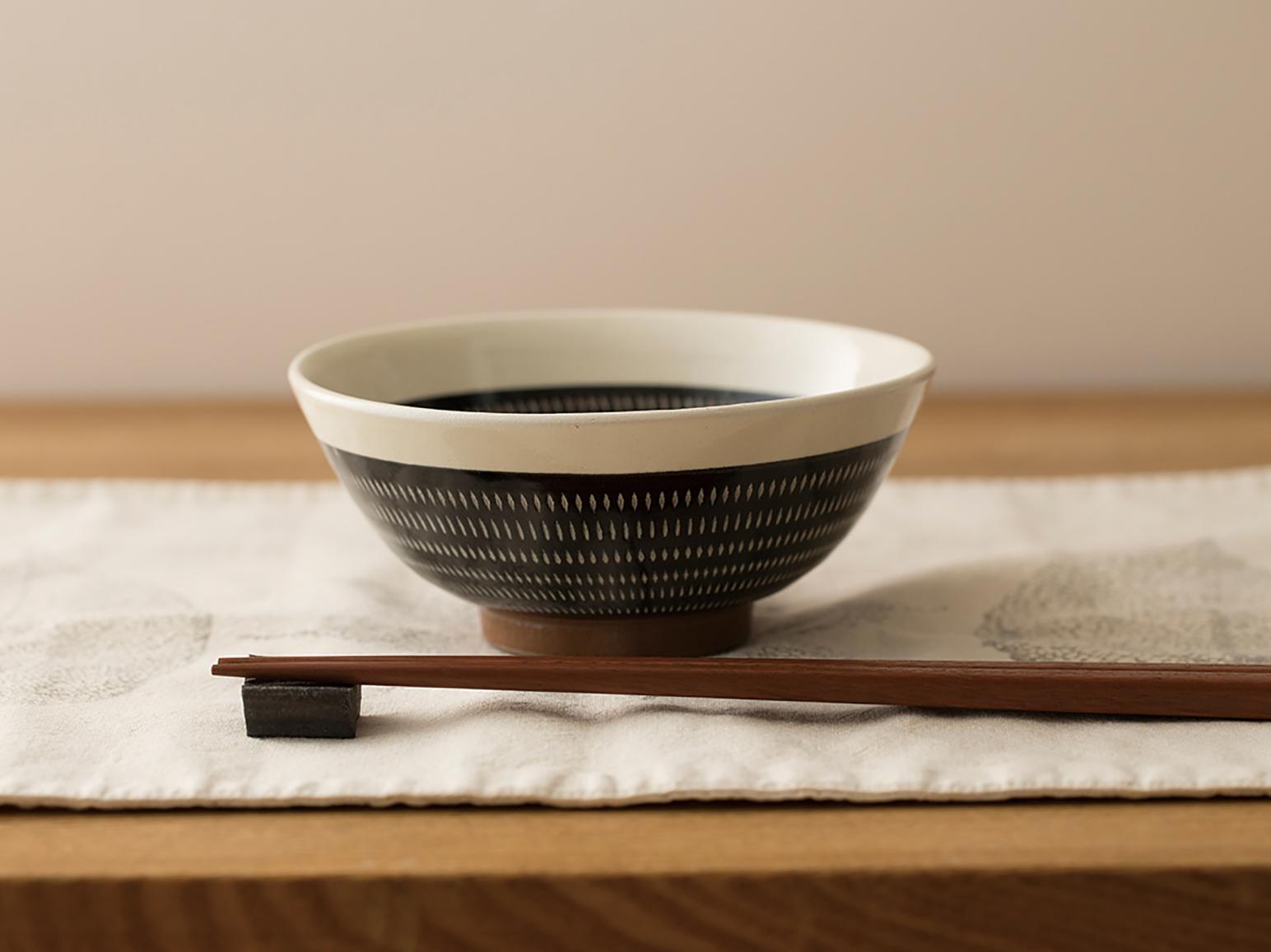
07.Rice bowl.
-
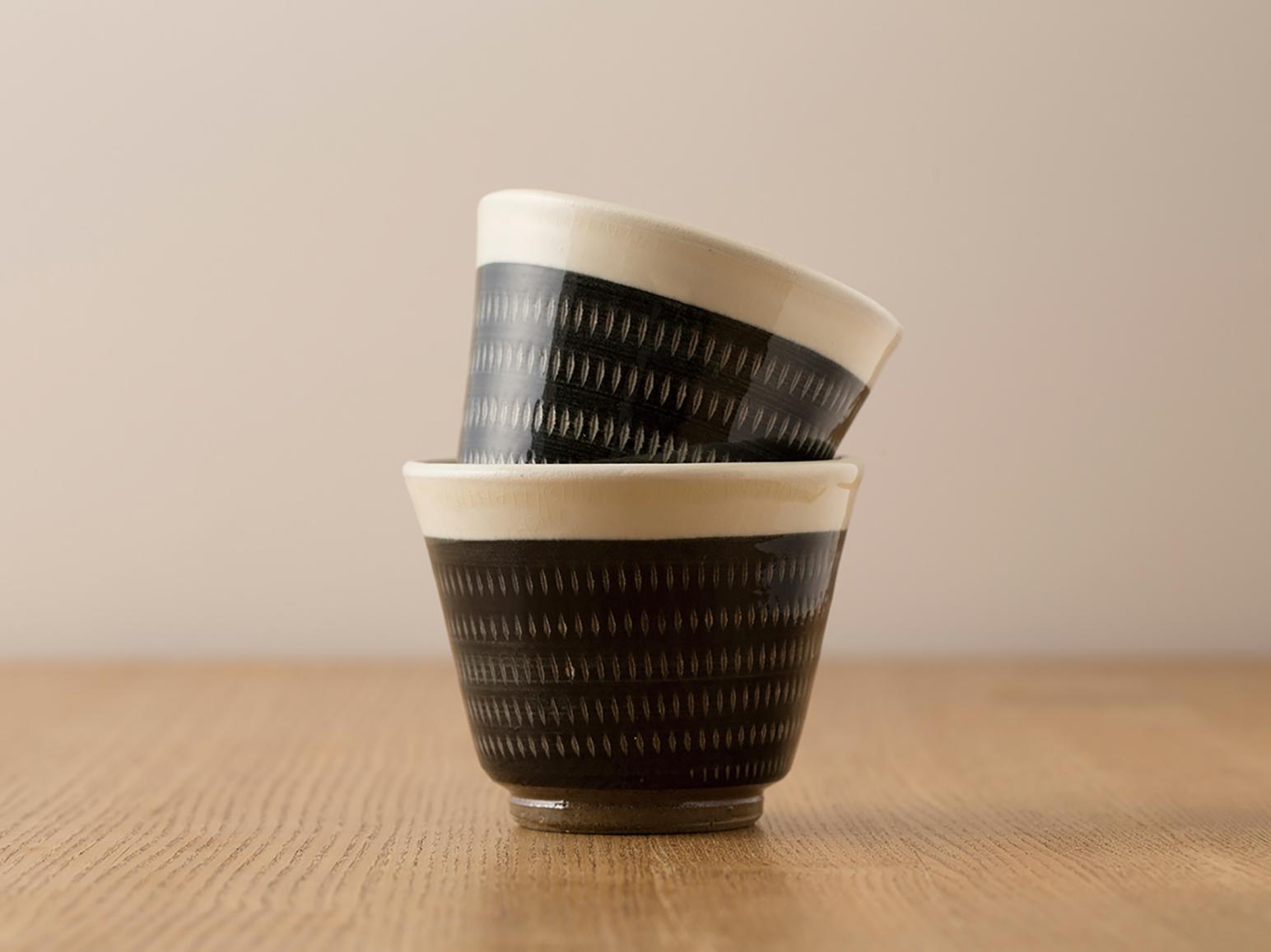
08.Small cup for broth for cold soba noodles.
-
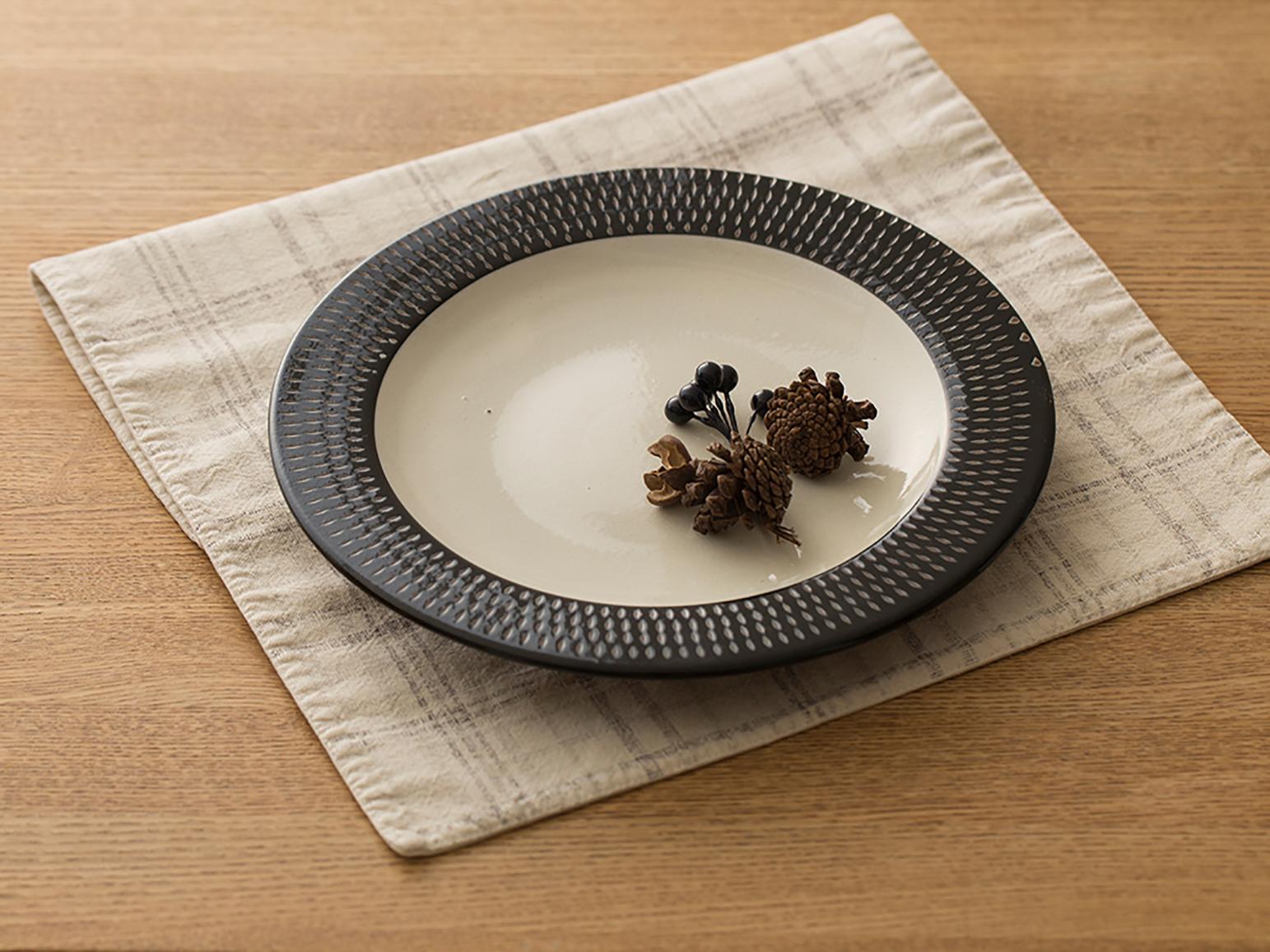
09.Plate for western style food.
Koishiwara Ceramics Cooperative Association
Koishiwara 730-9, Toho-cho, Asakura, Fukuoka Prefecture 〒838-1601
TEL : 0946-74-2266
HP : https://tenku-koishiwara.com/
Contents
01 Hakataori
02 Hakata Ningyo
03 Aganoyaki
04 Koishiwarayaki
05 Kurume Kasuri
06 Yame Chochin
07 Yame Fukushima Butsudan


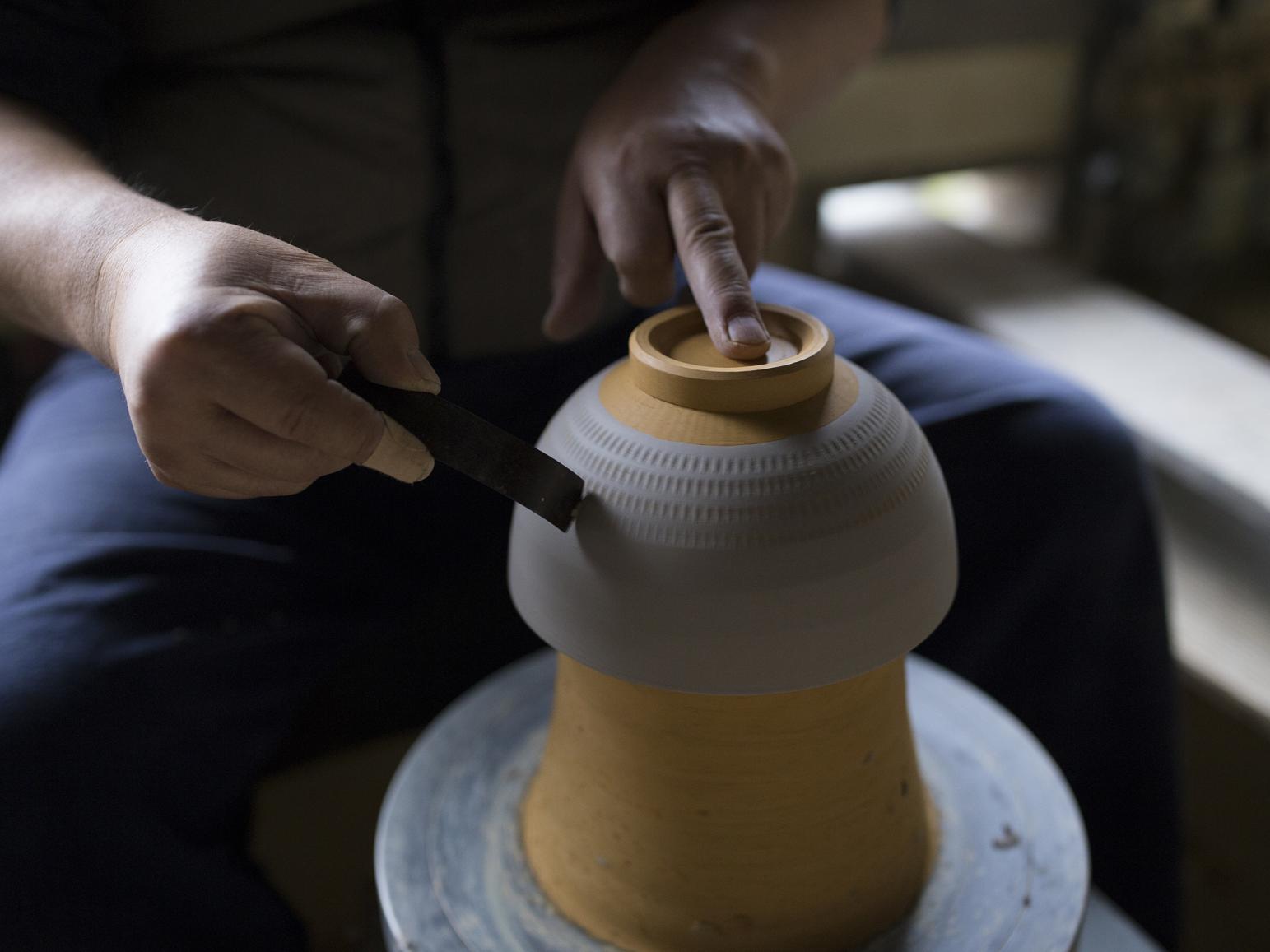
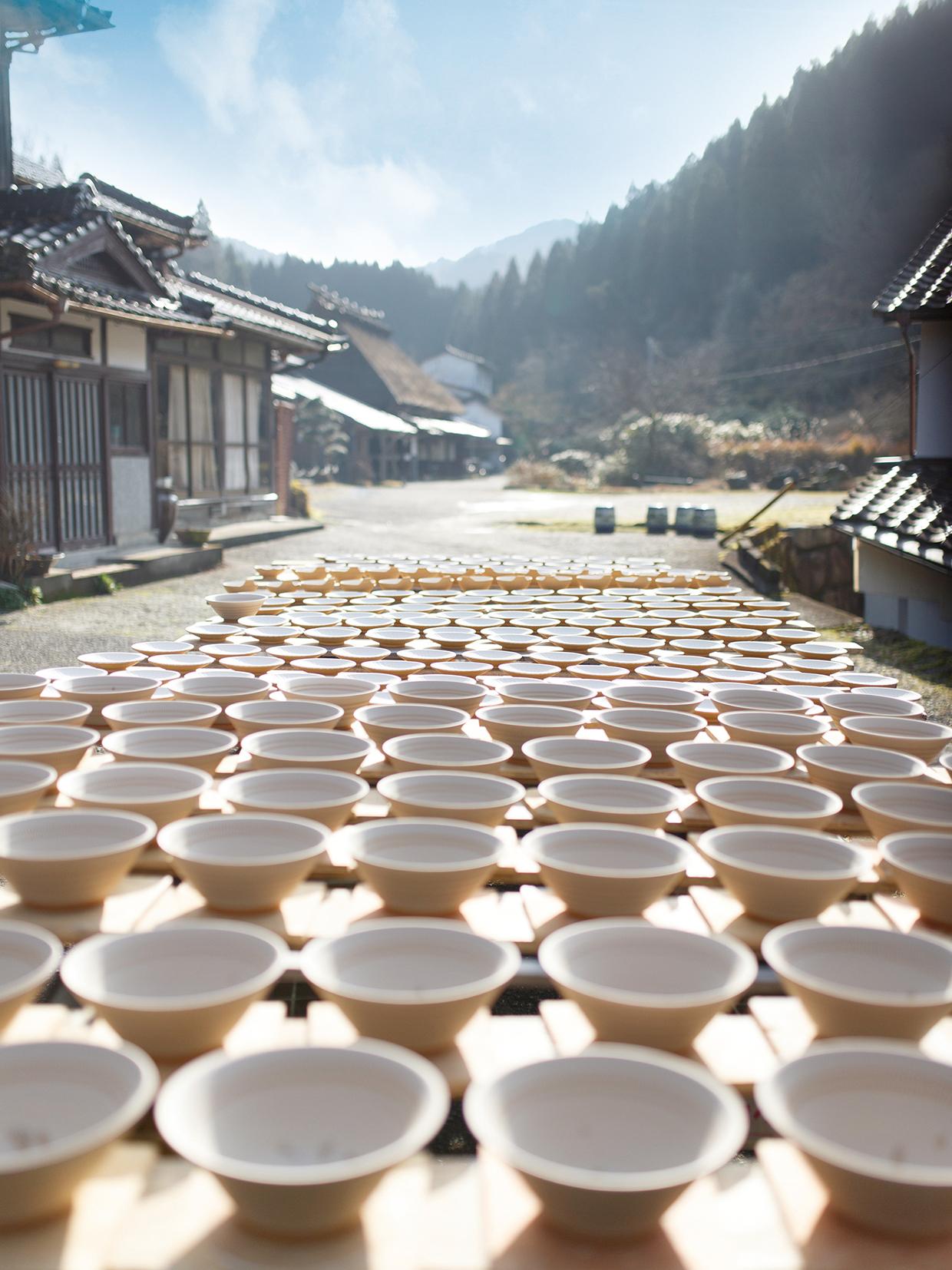
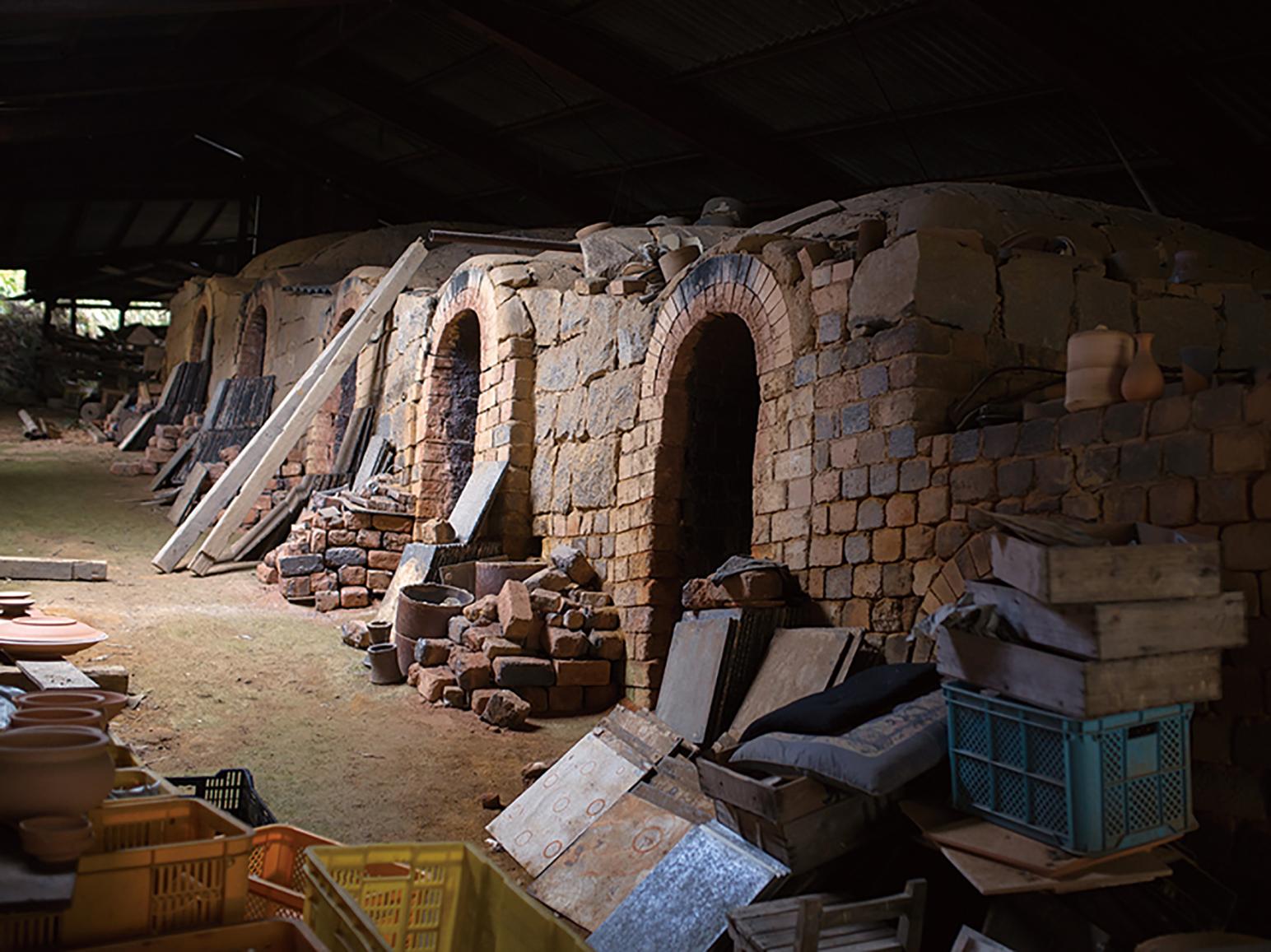
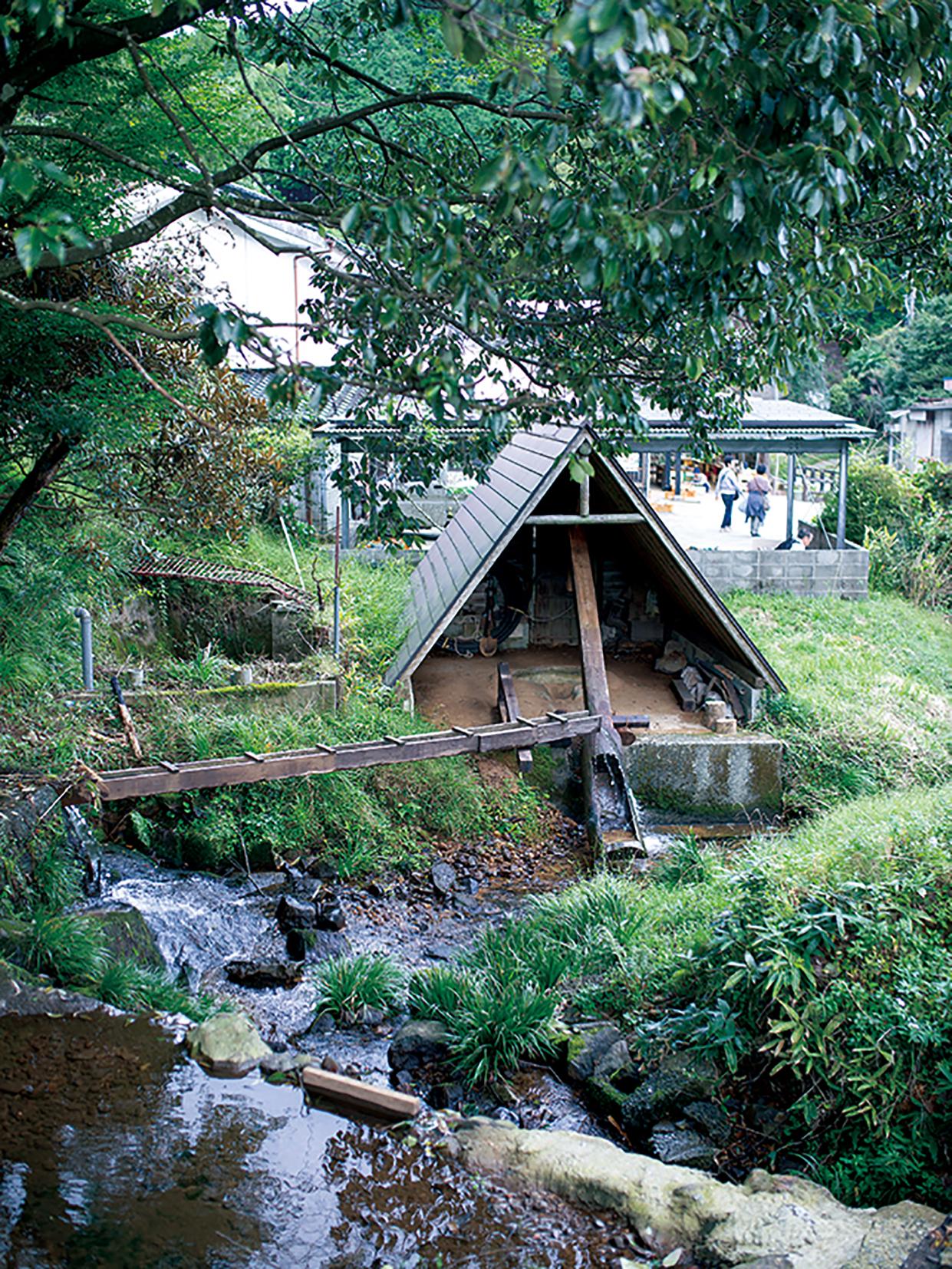
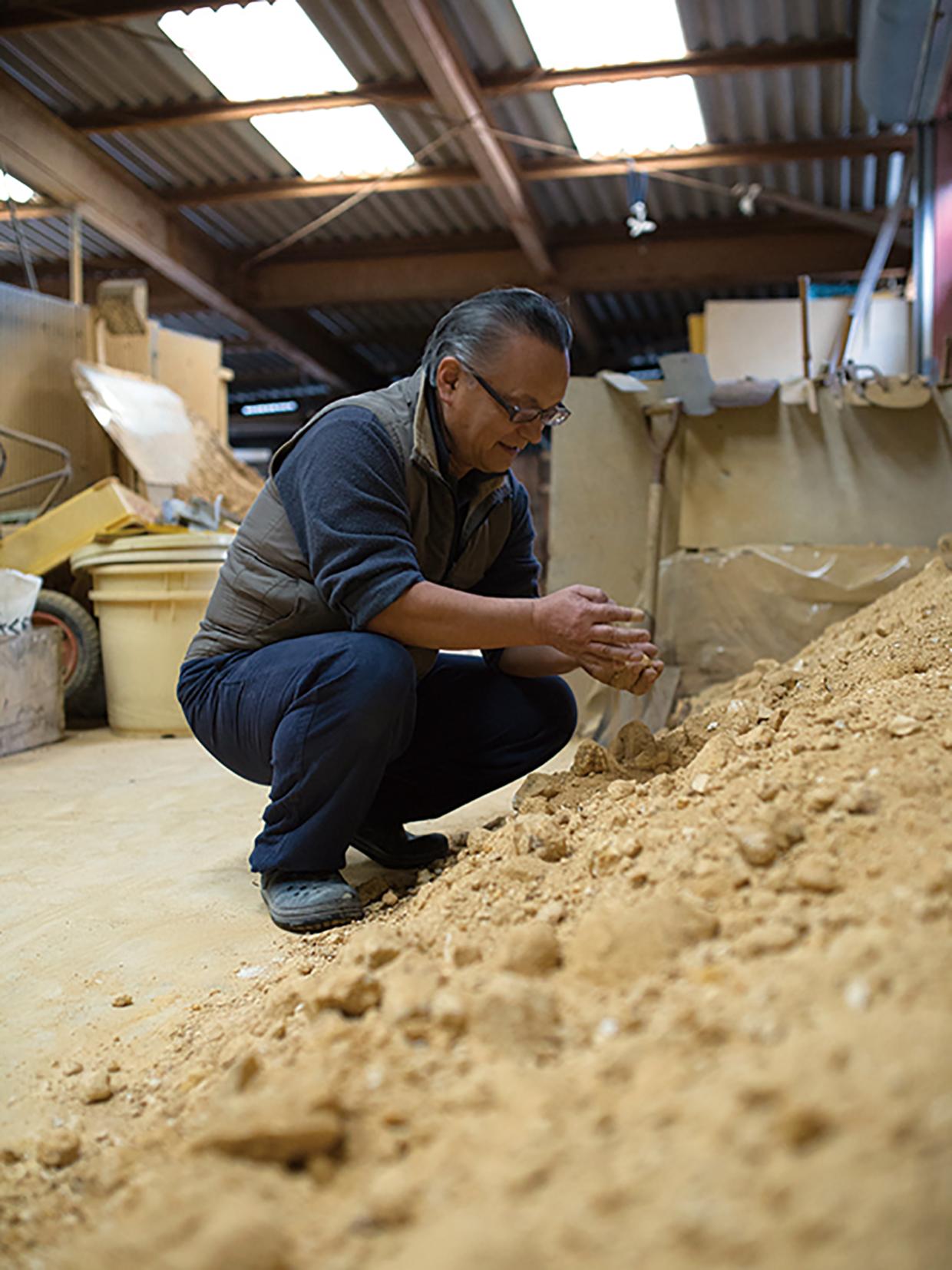
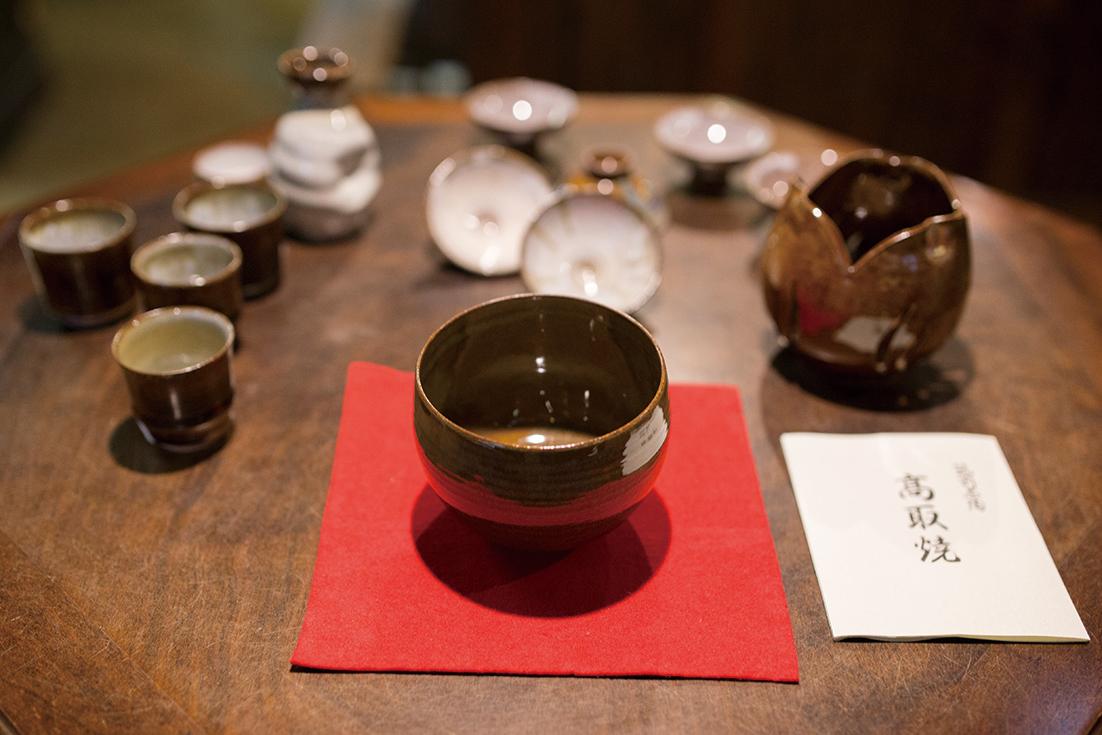
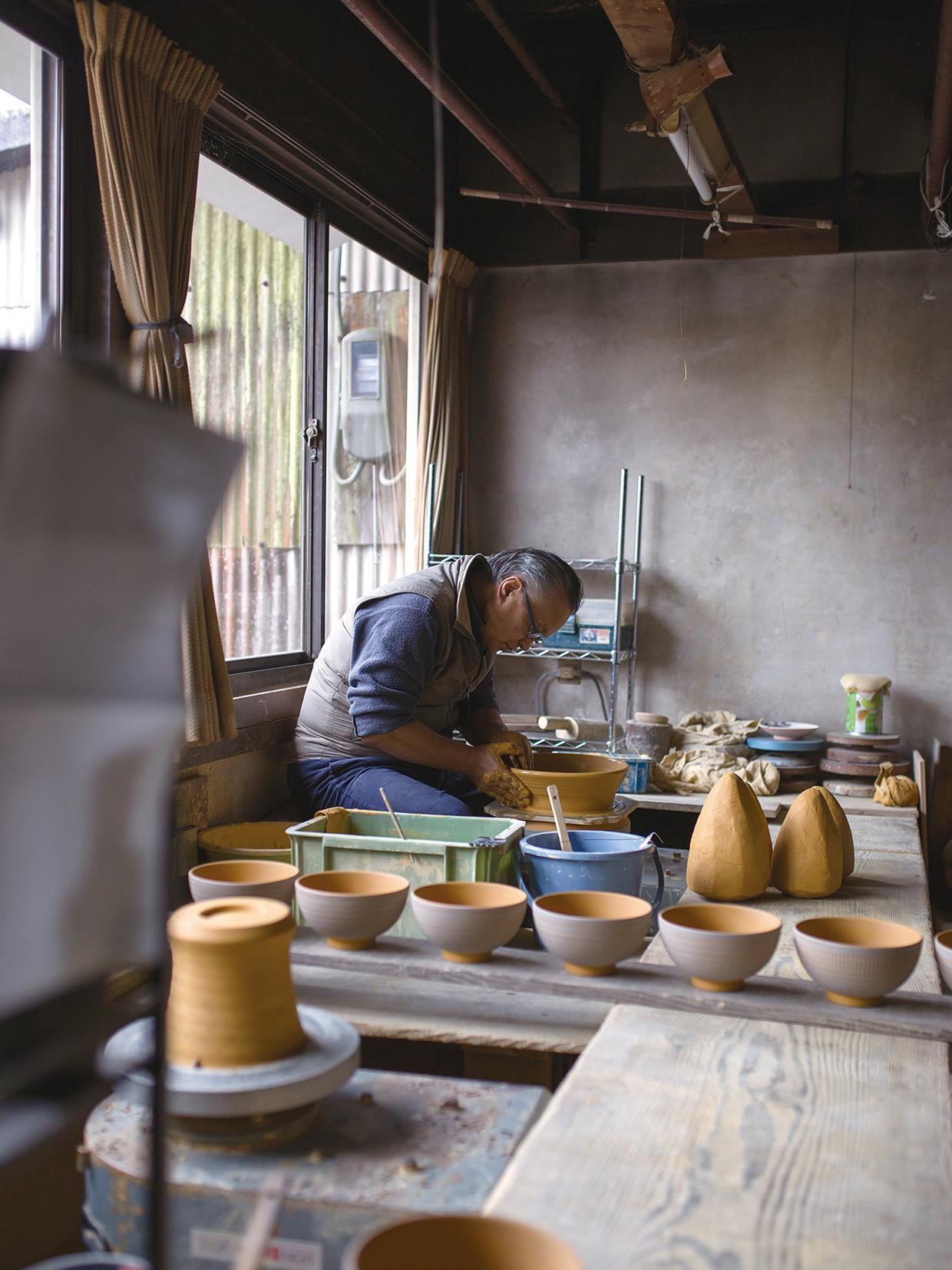
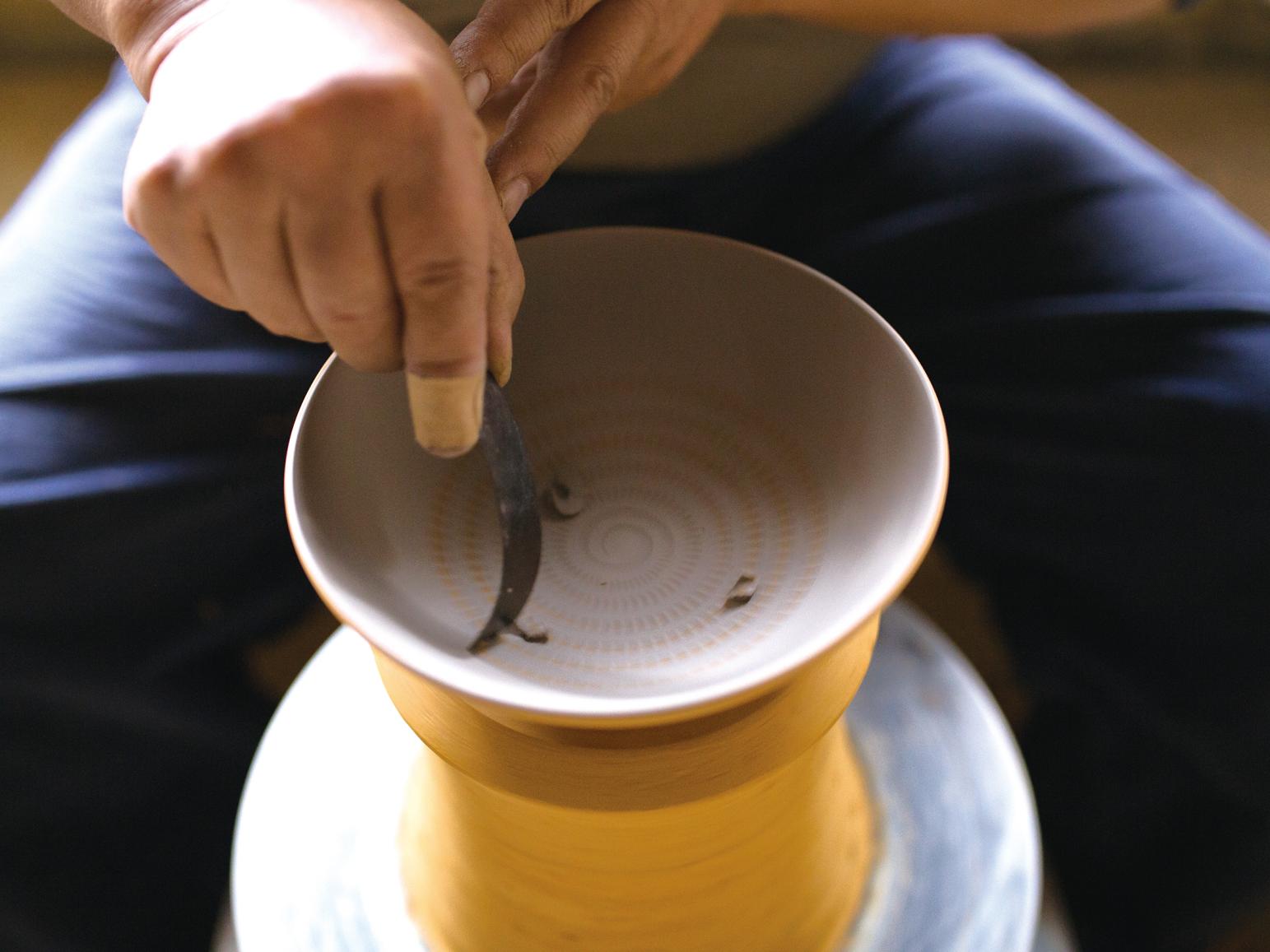
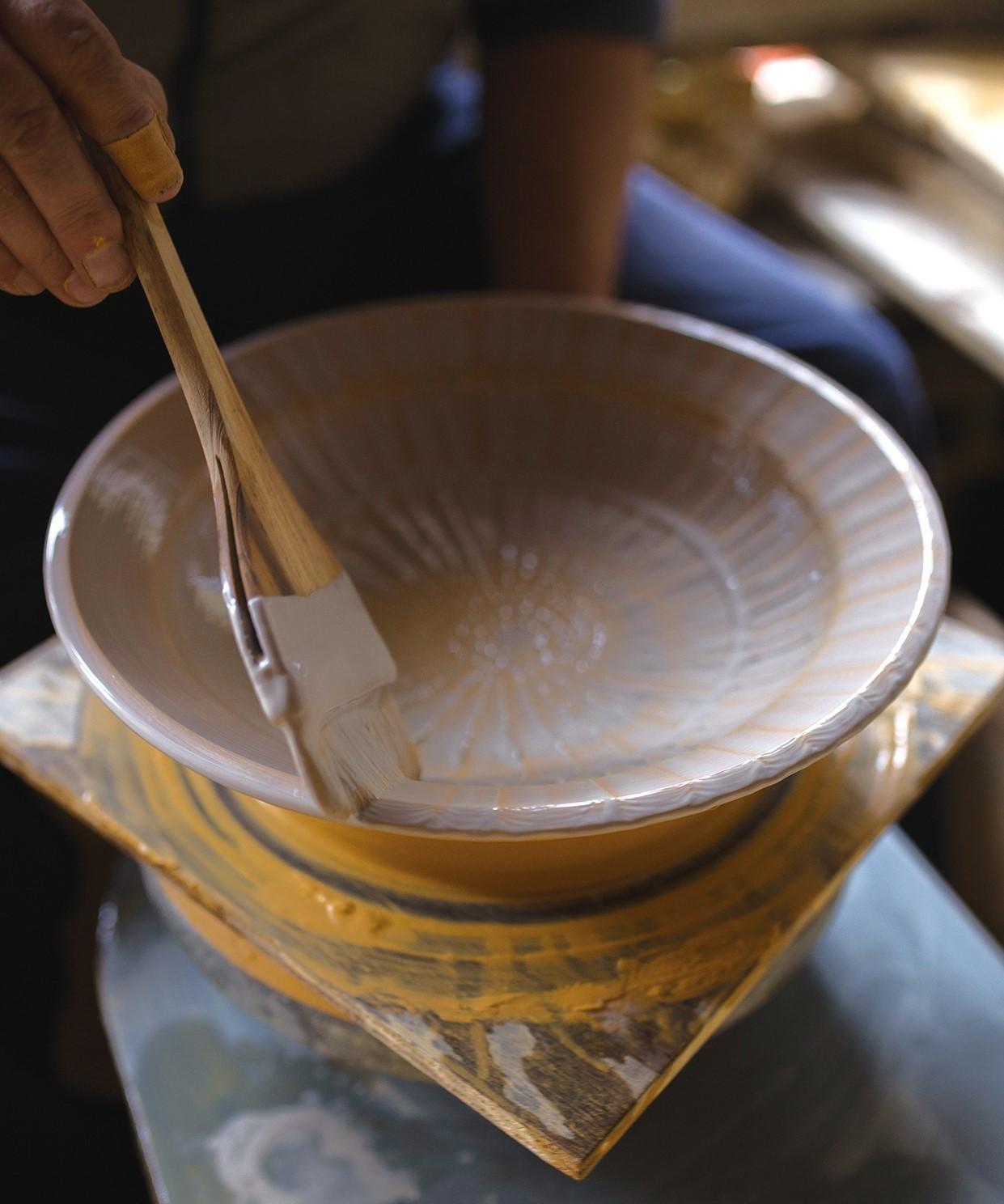
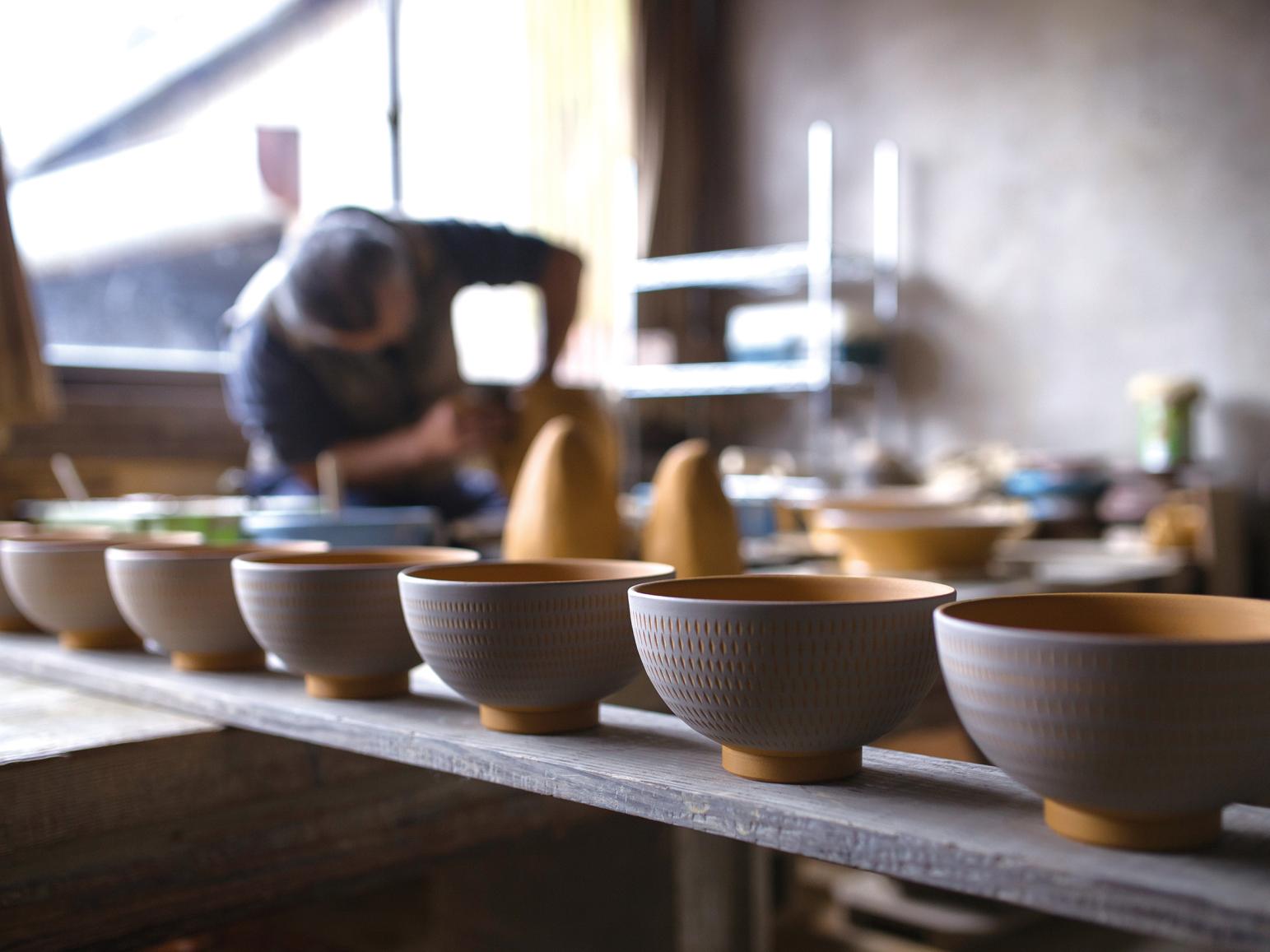
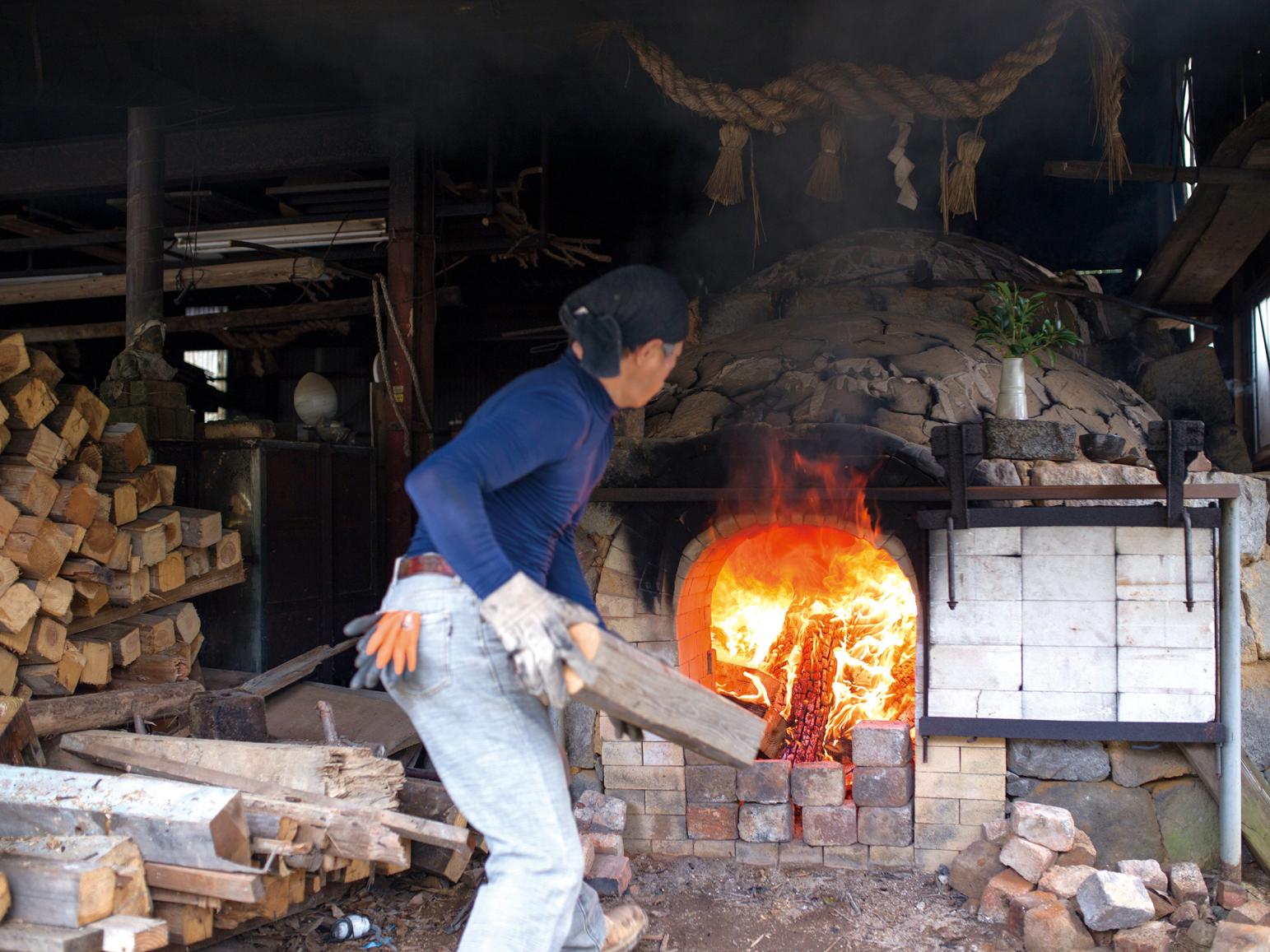
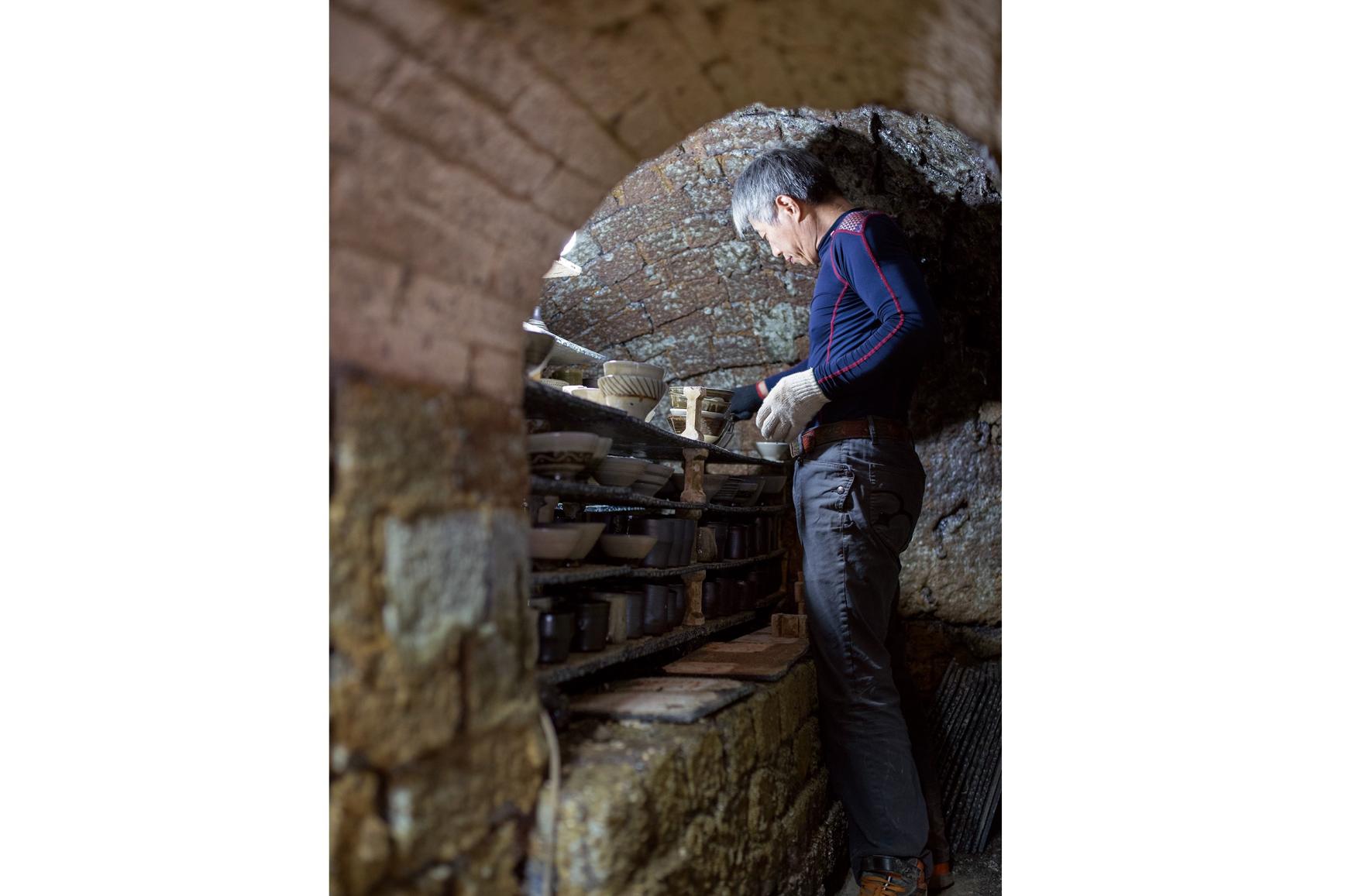
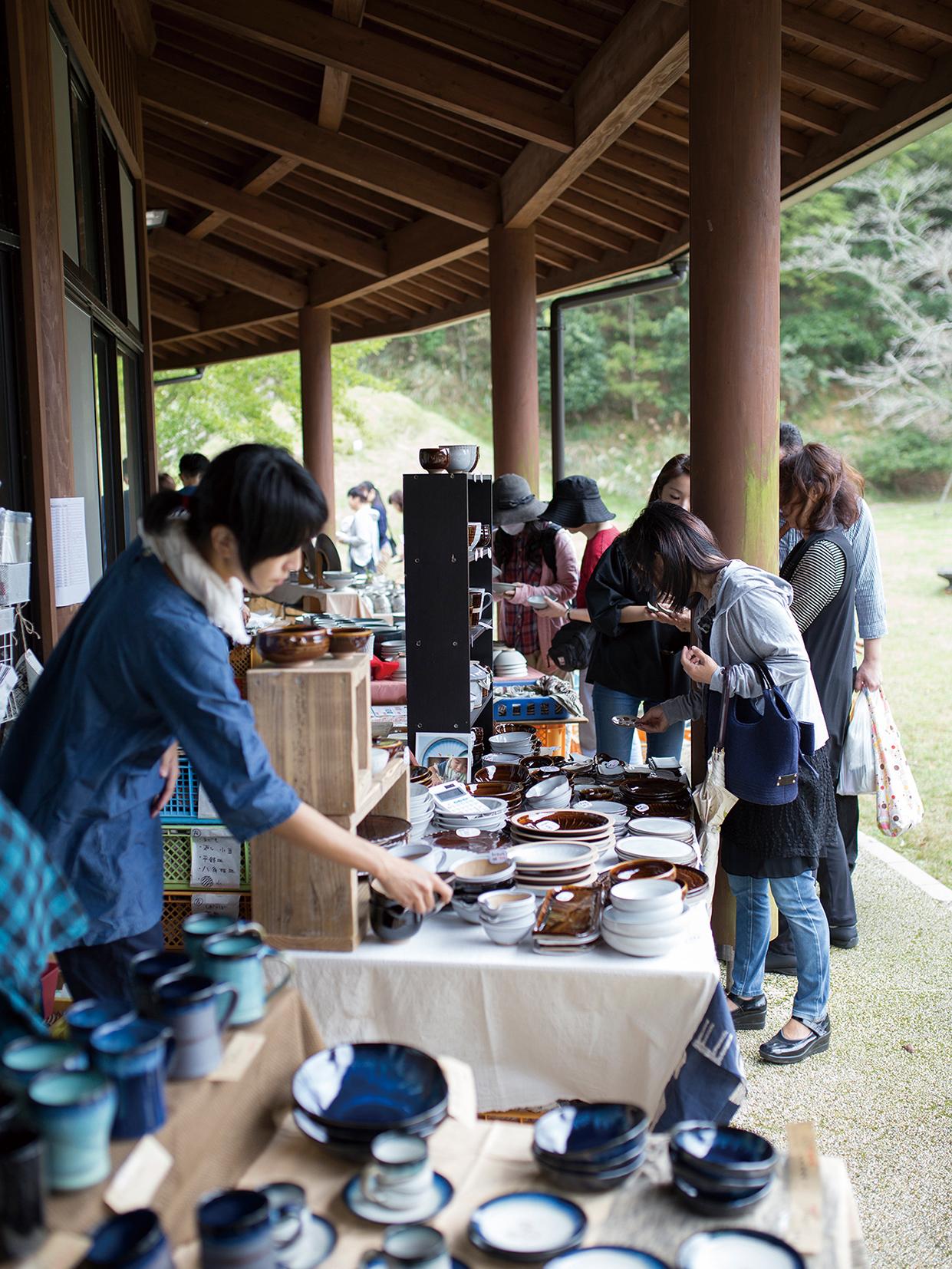
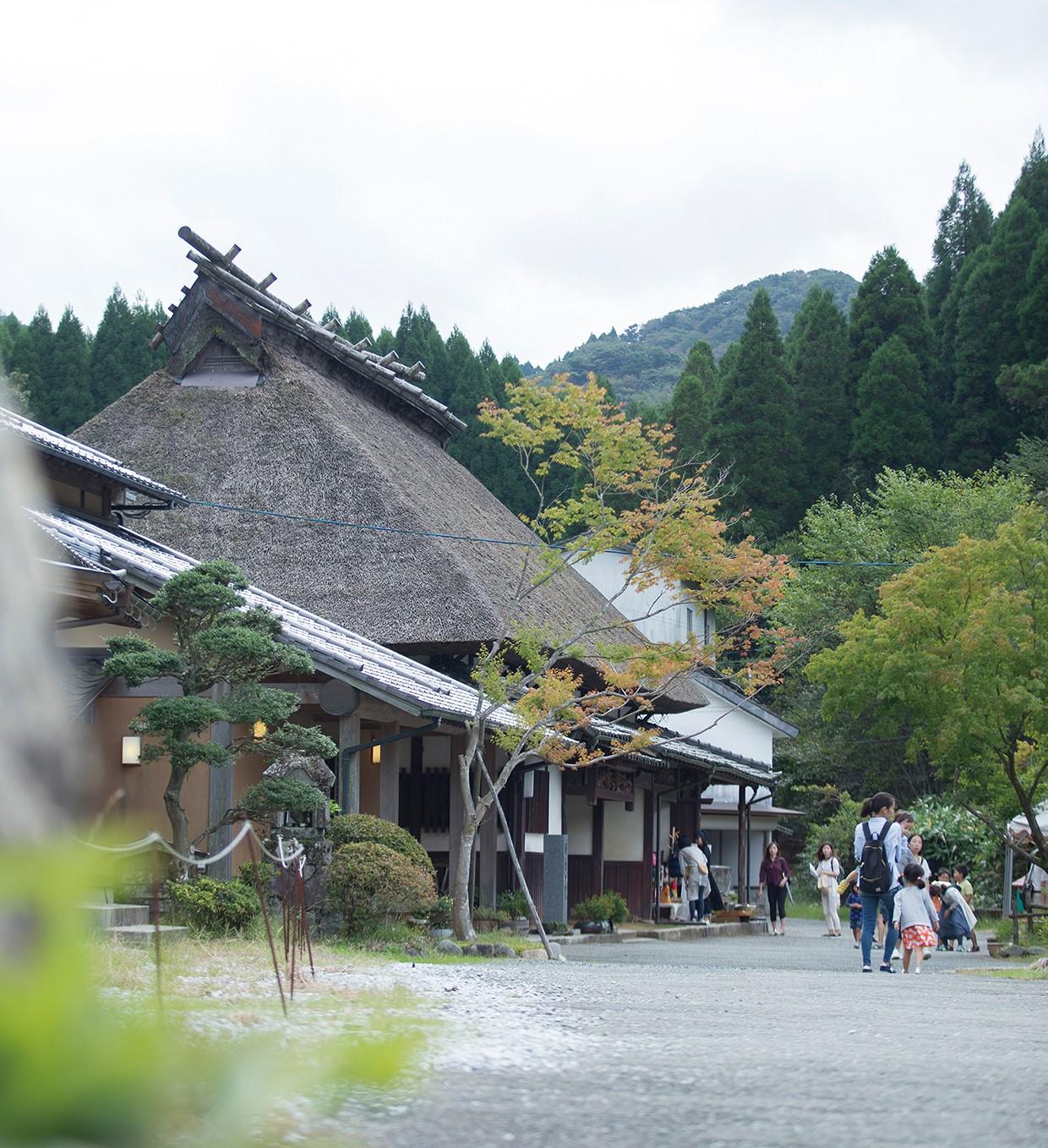
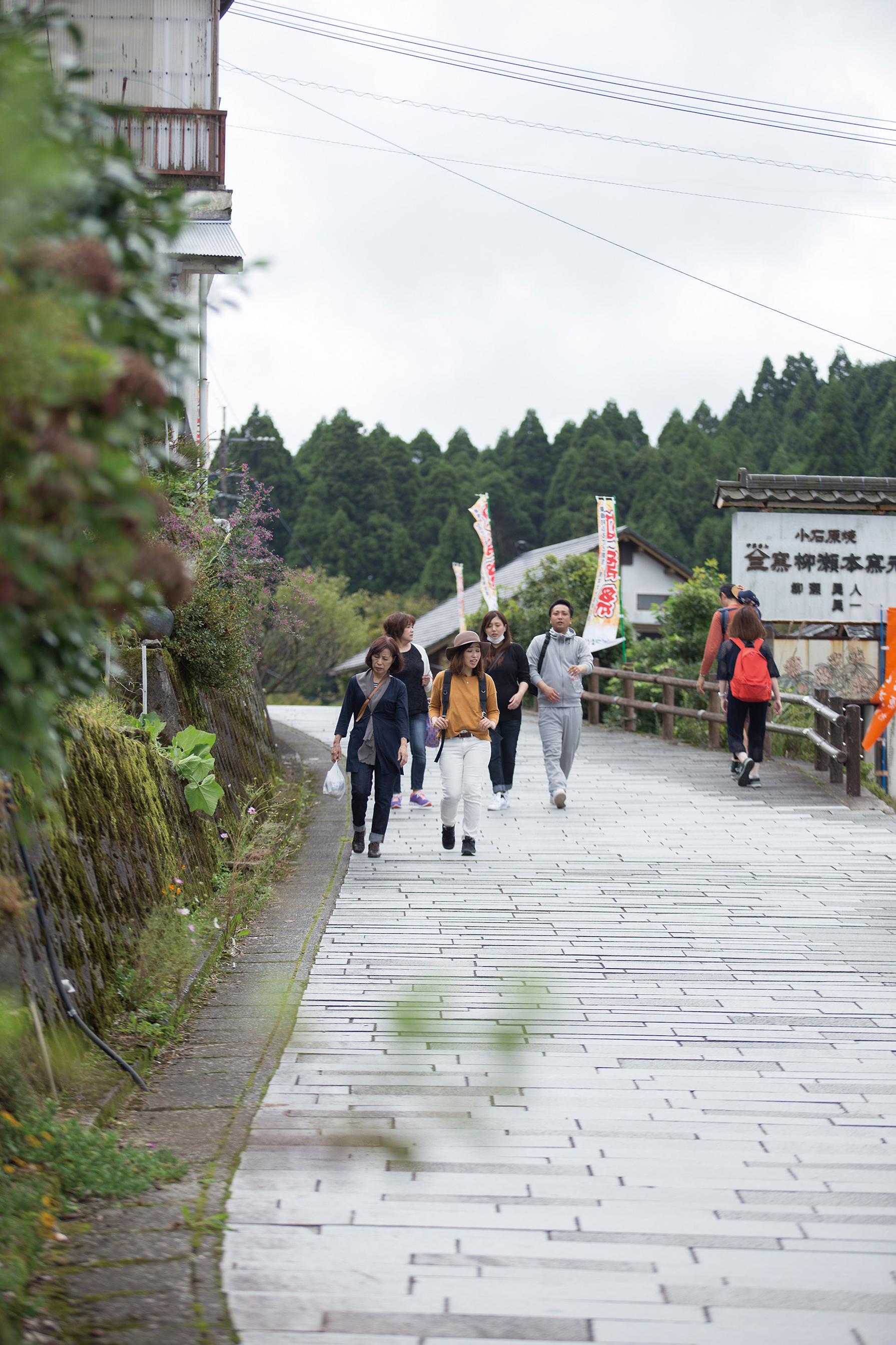
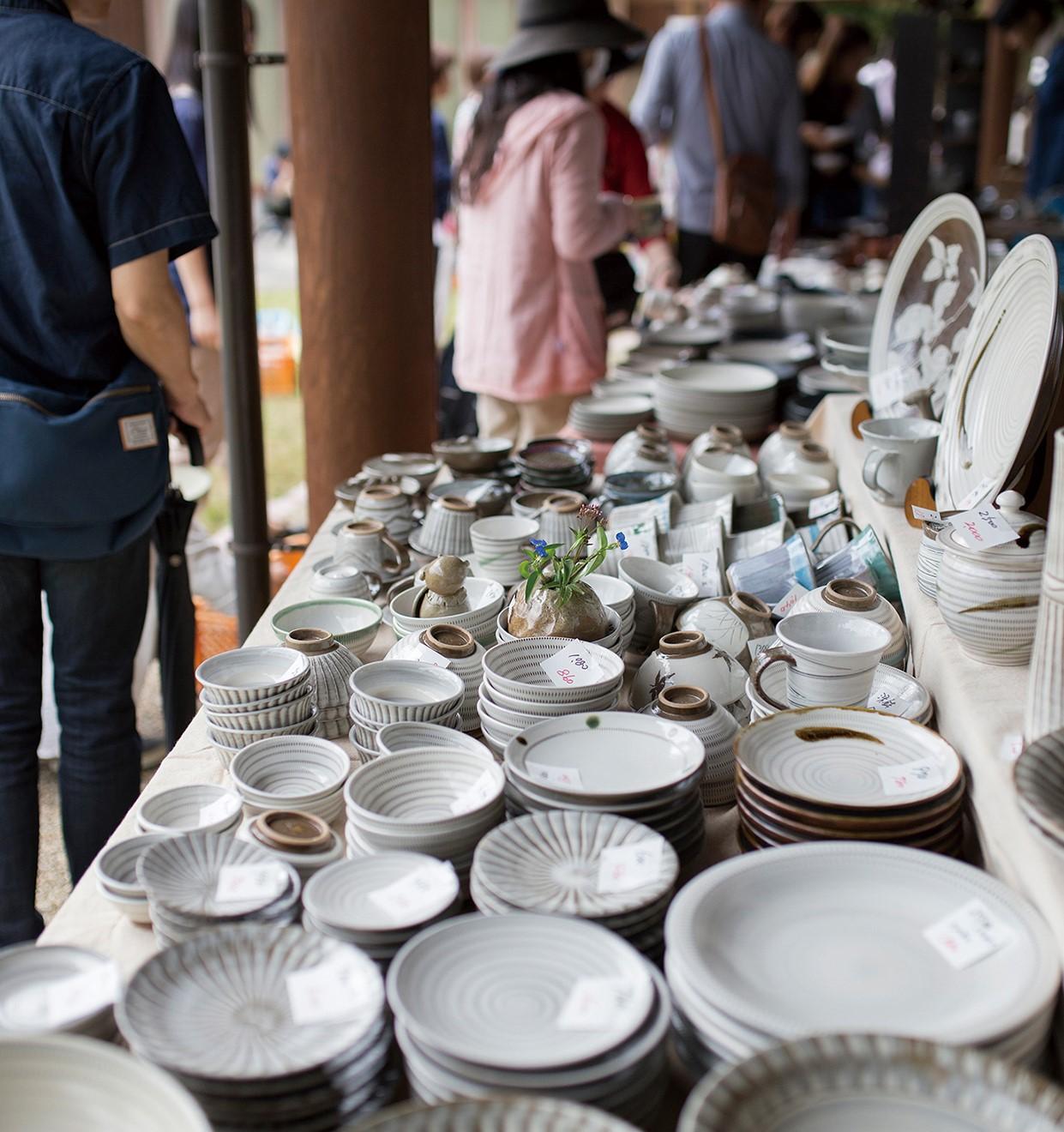
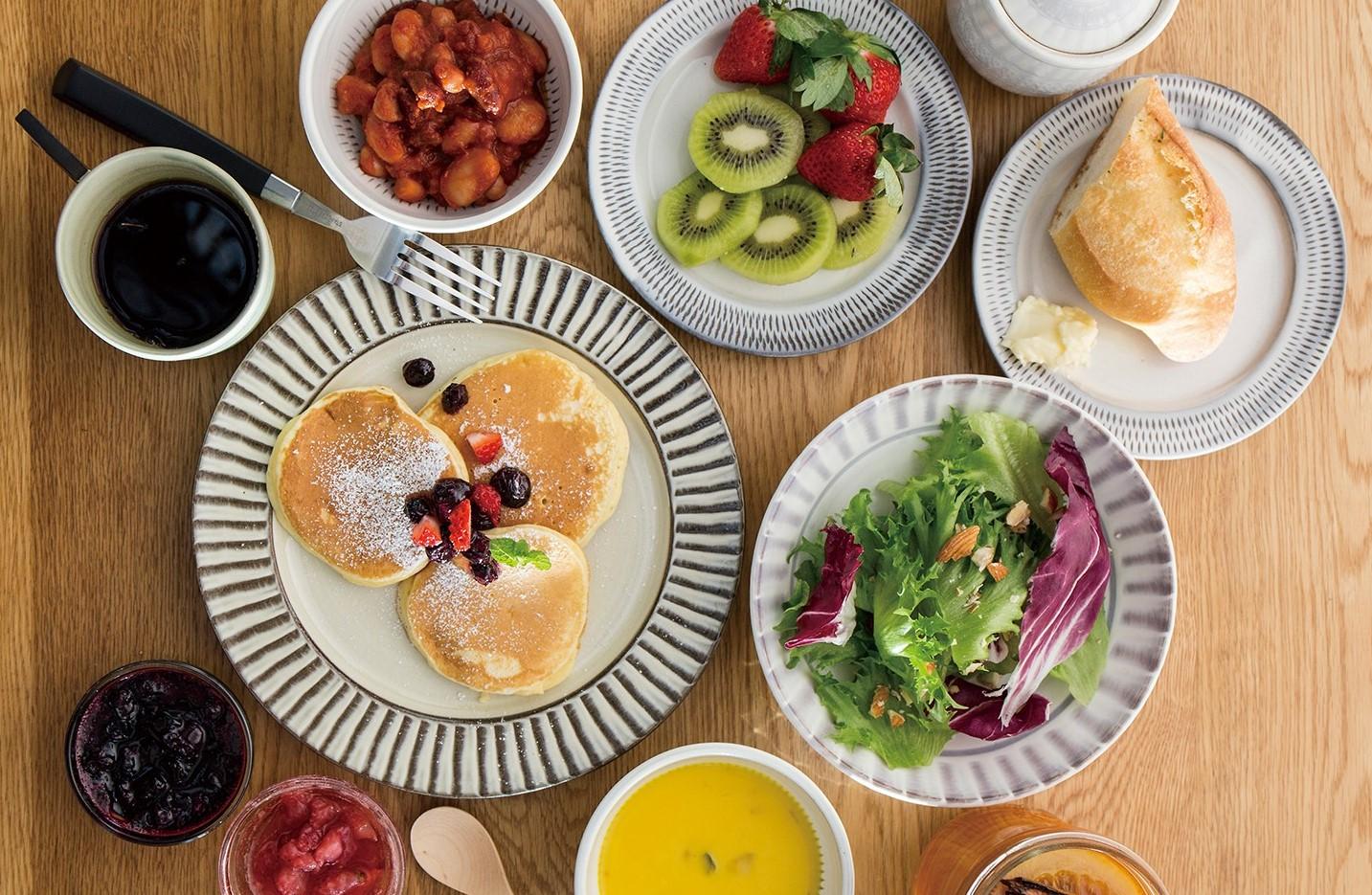
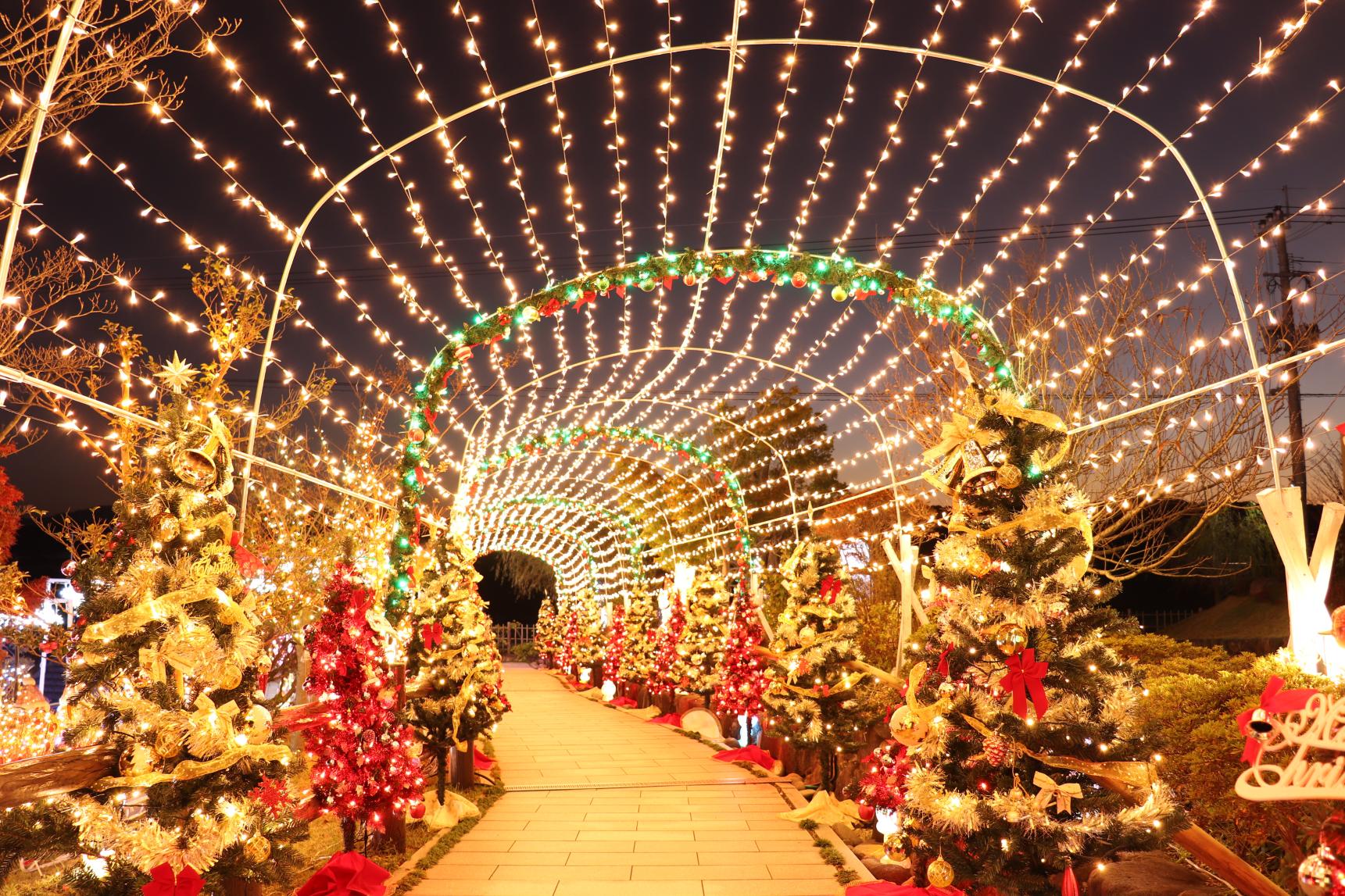
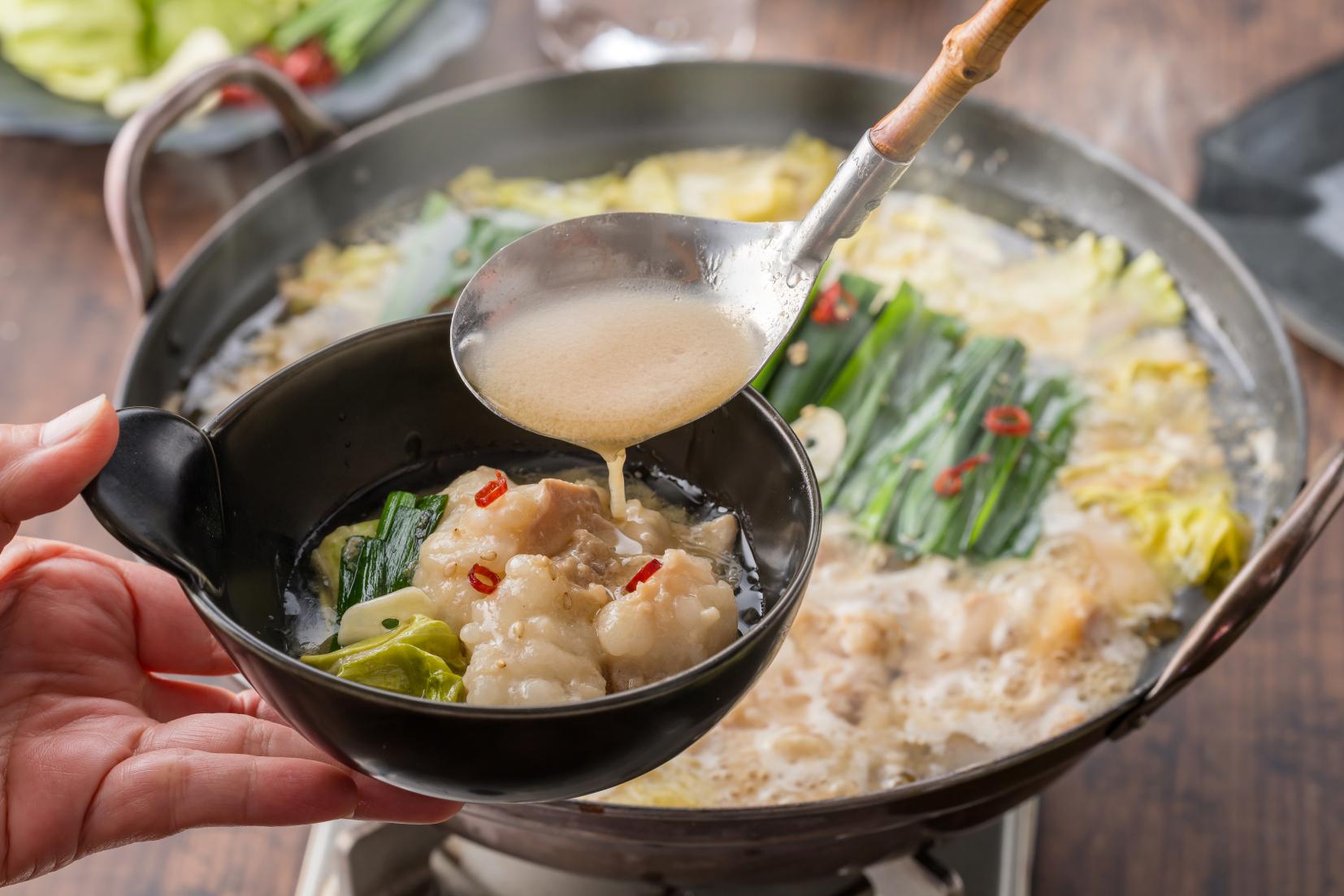
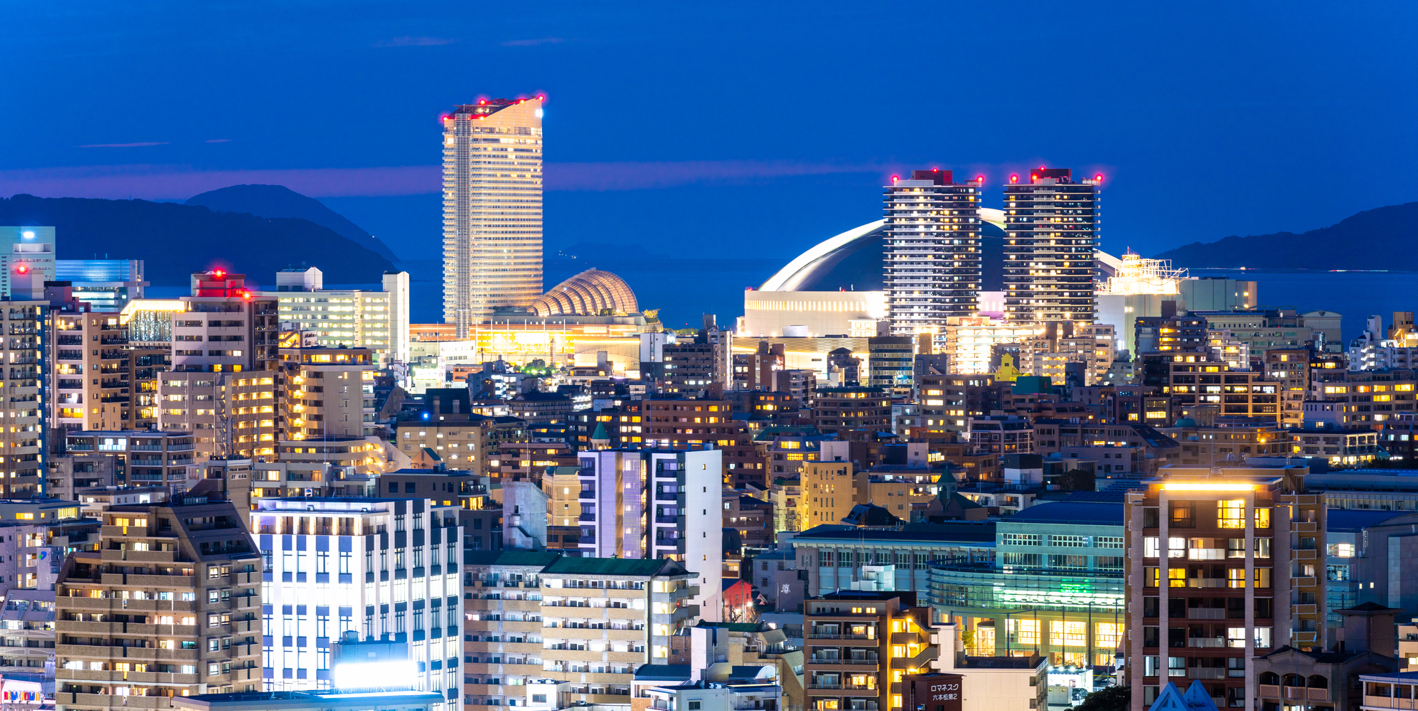
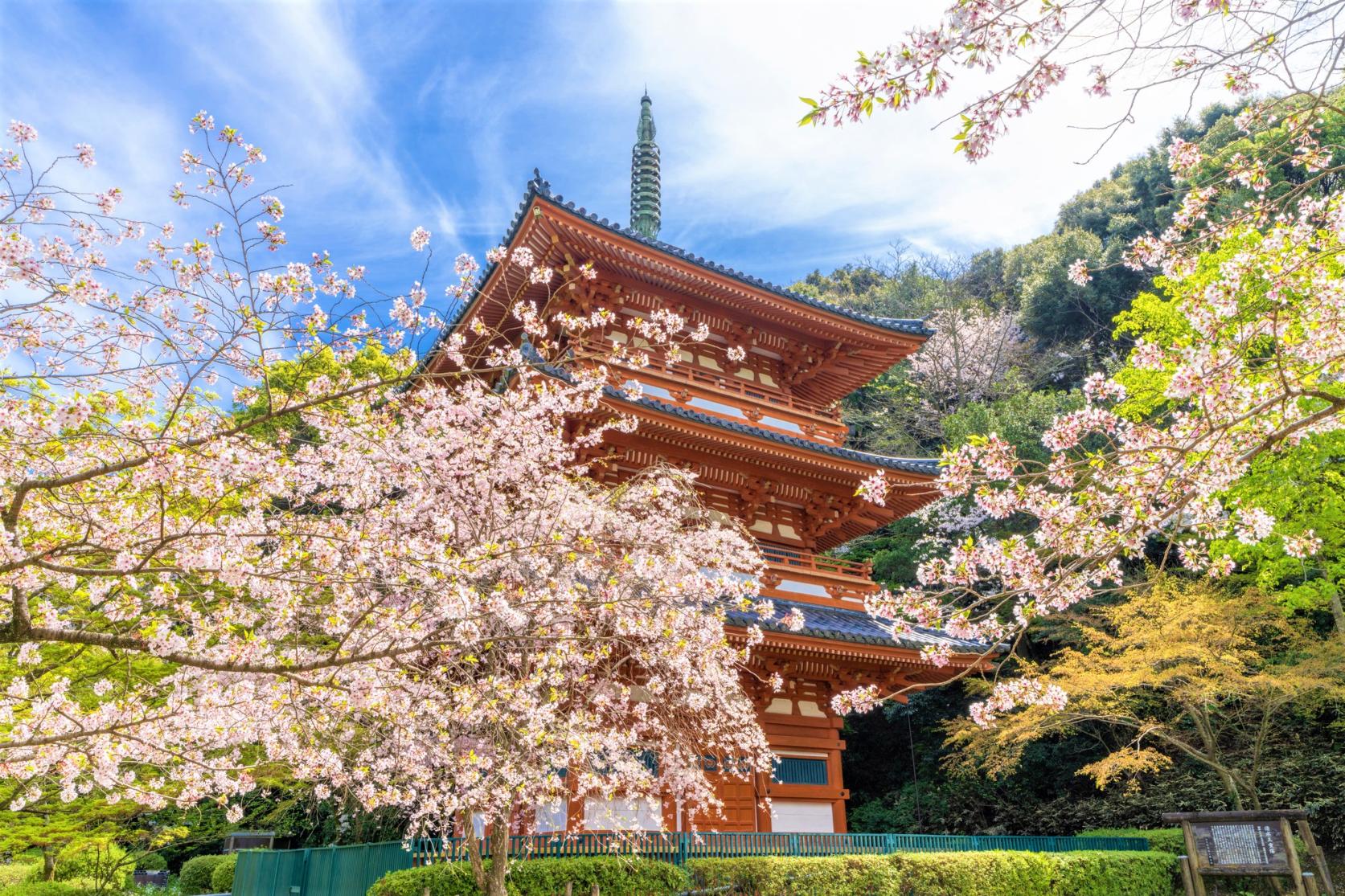
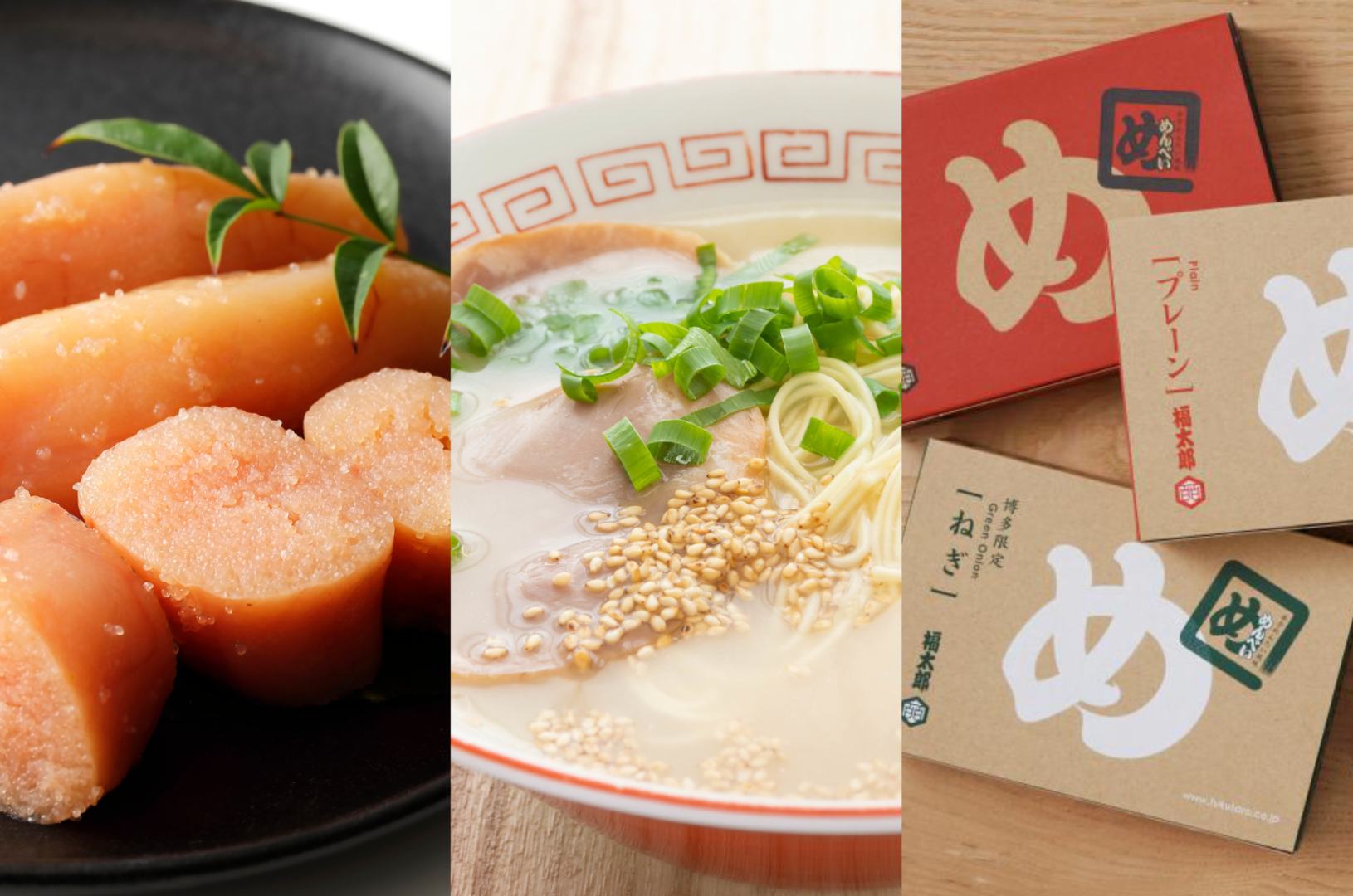
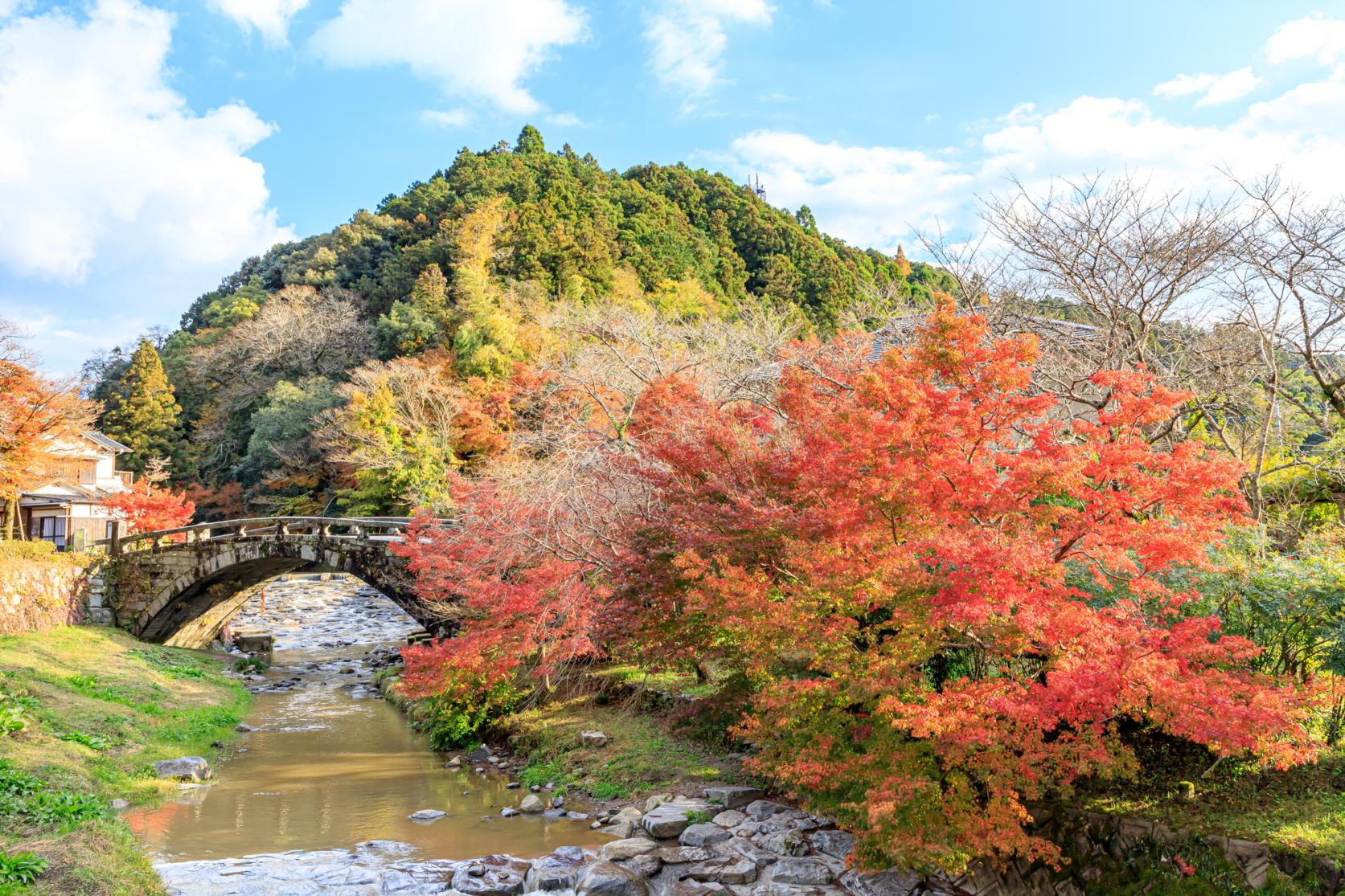

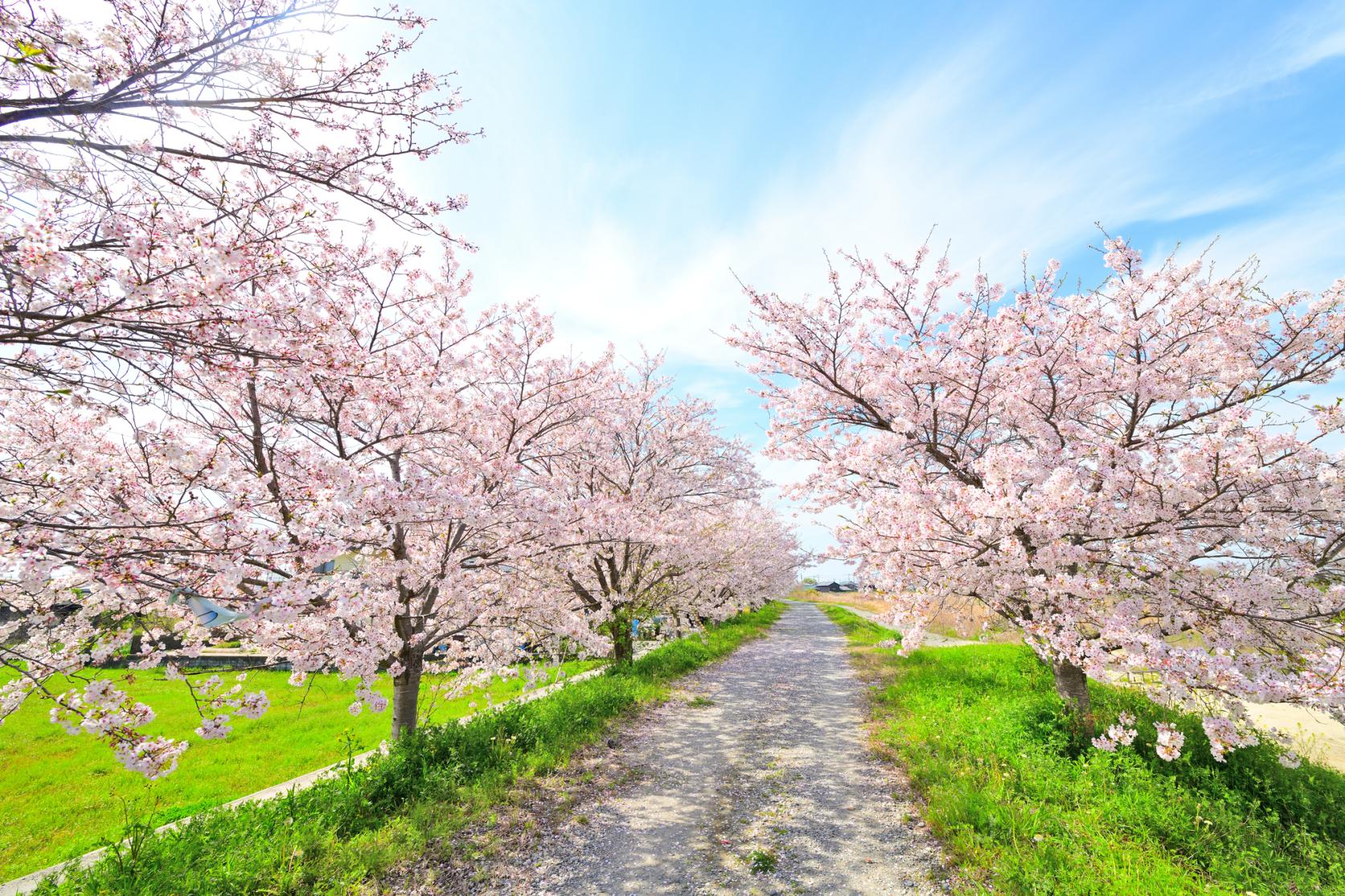
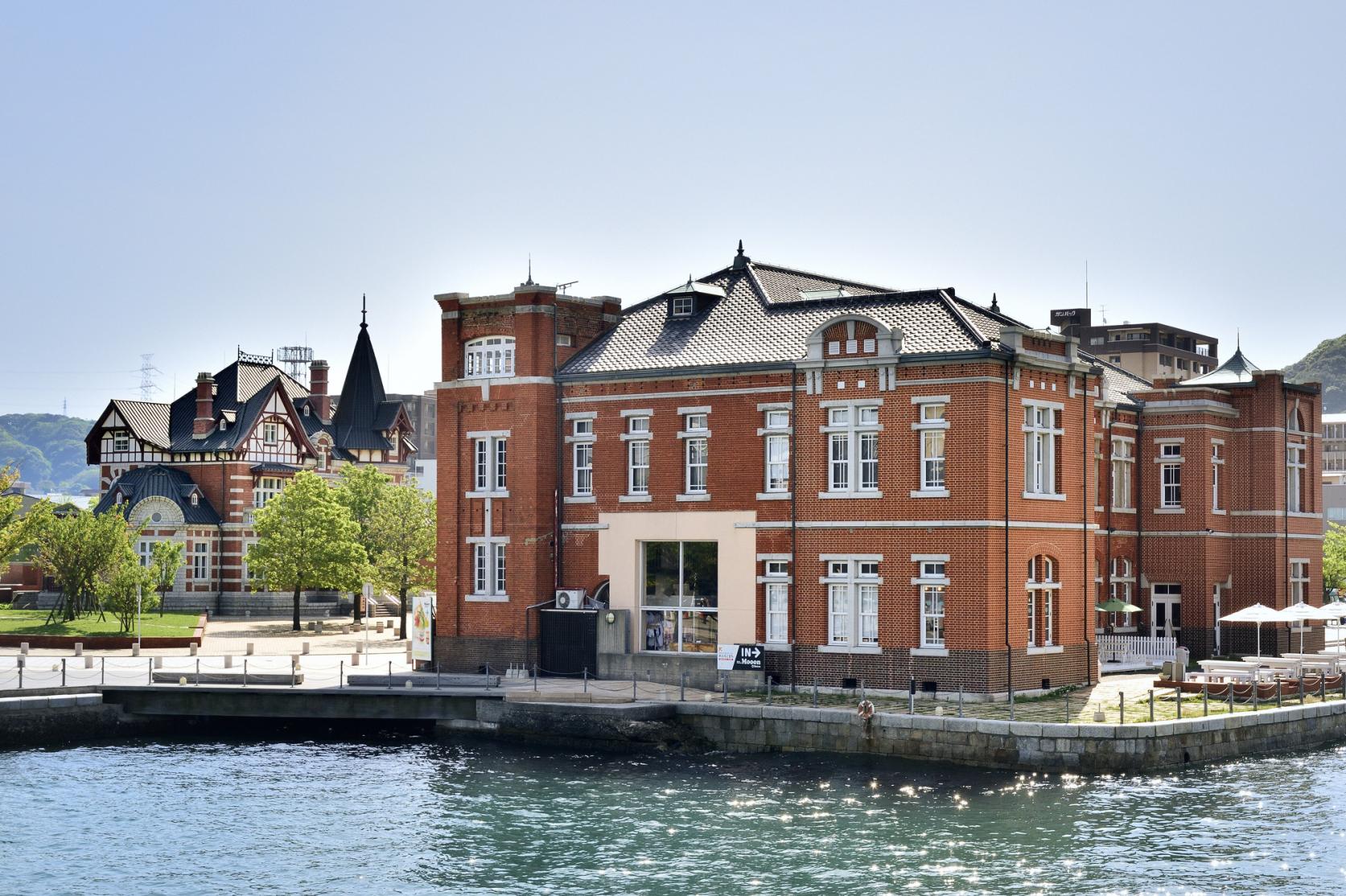
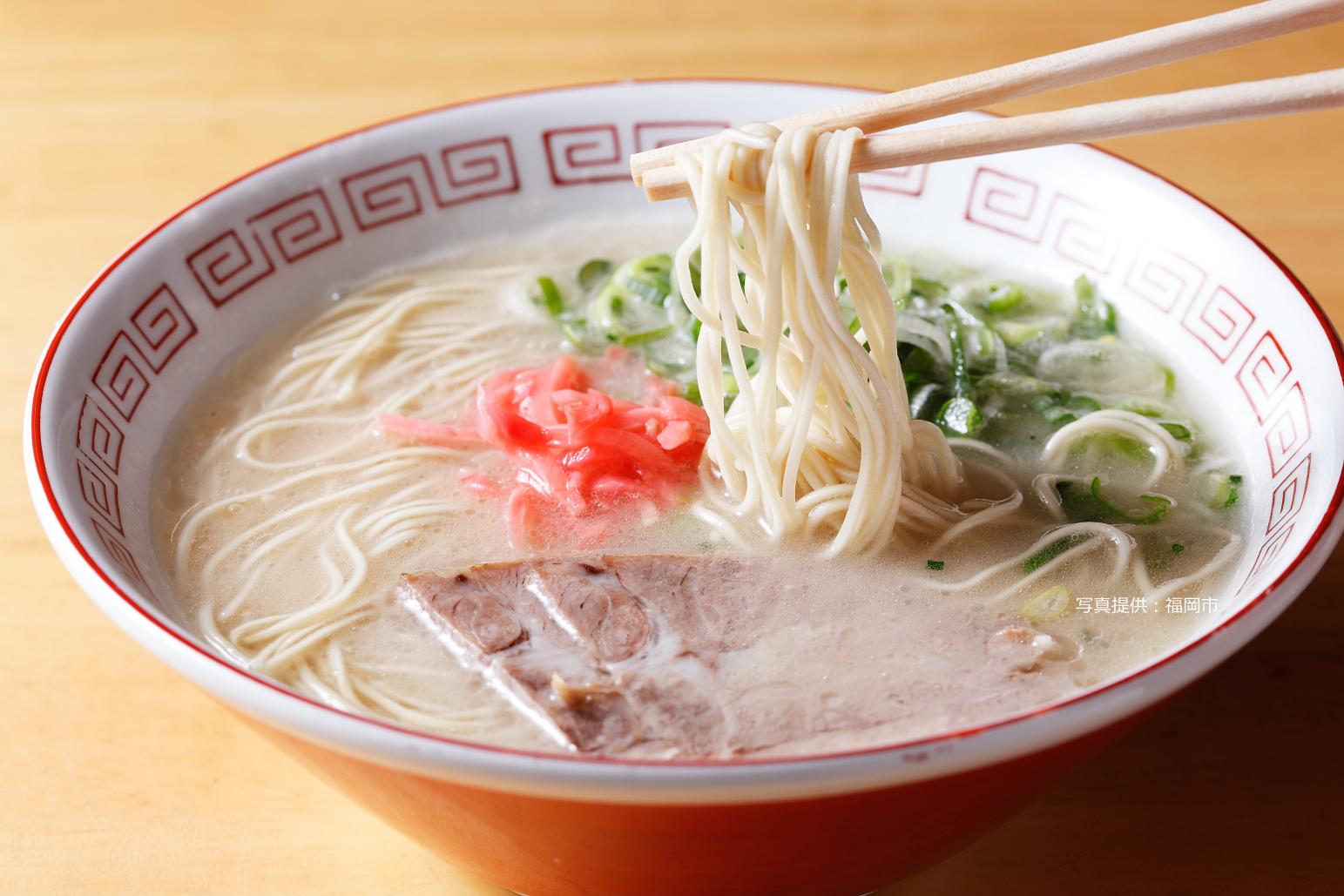
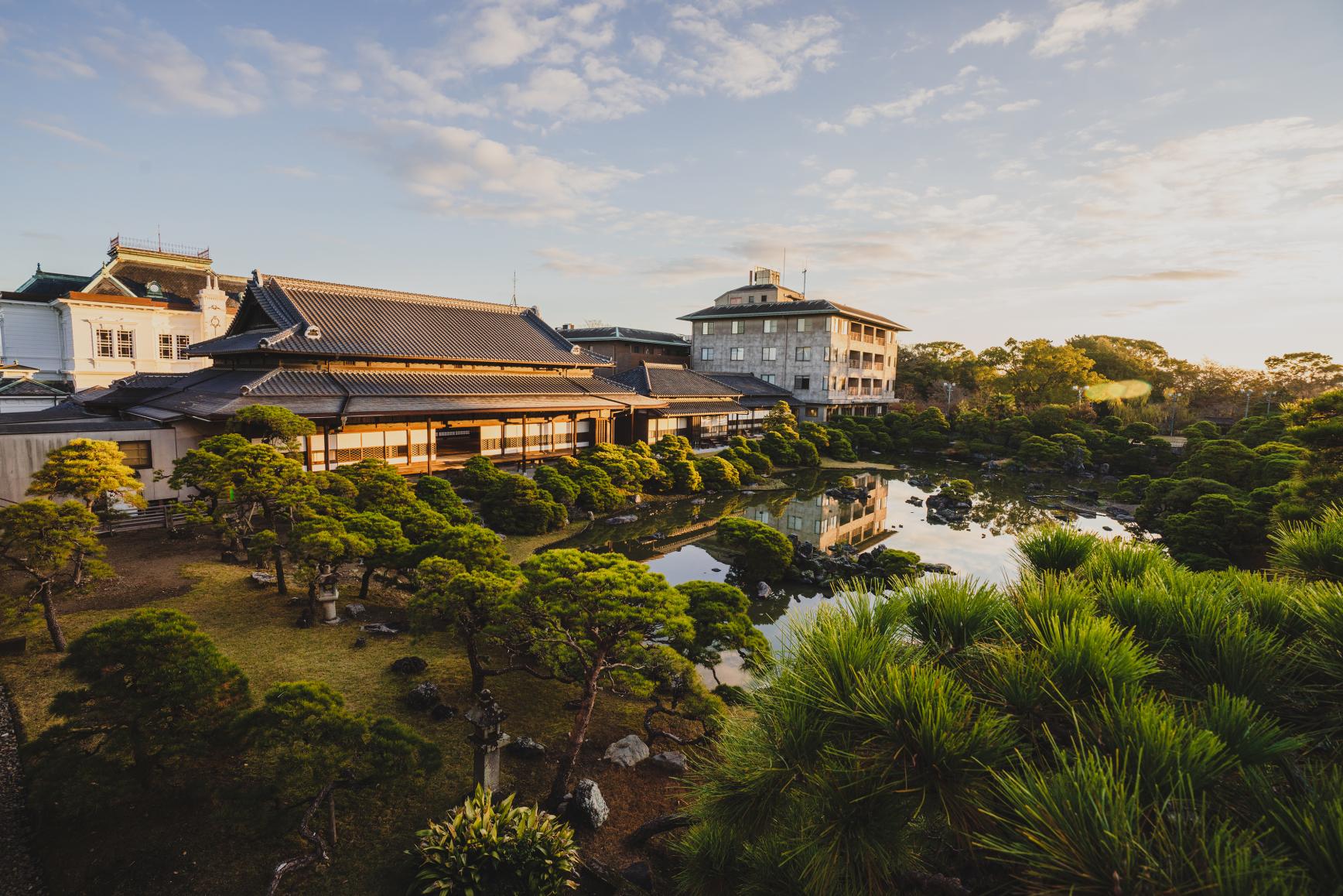
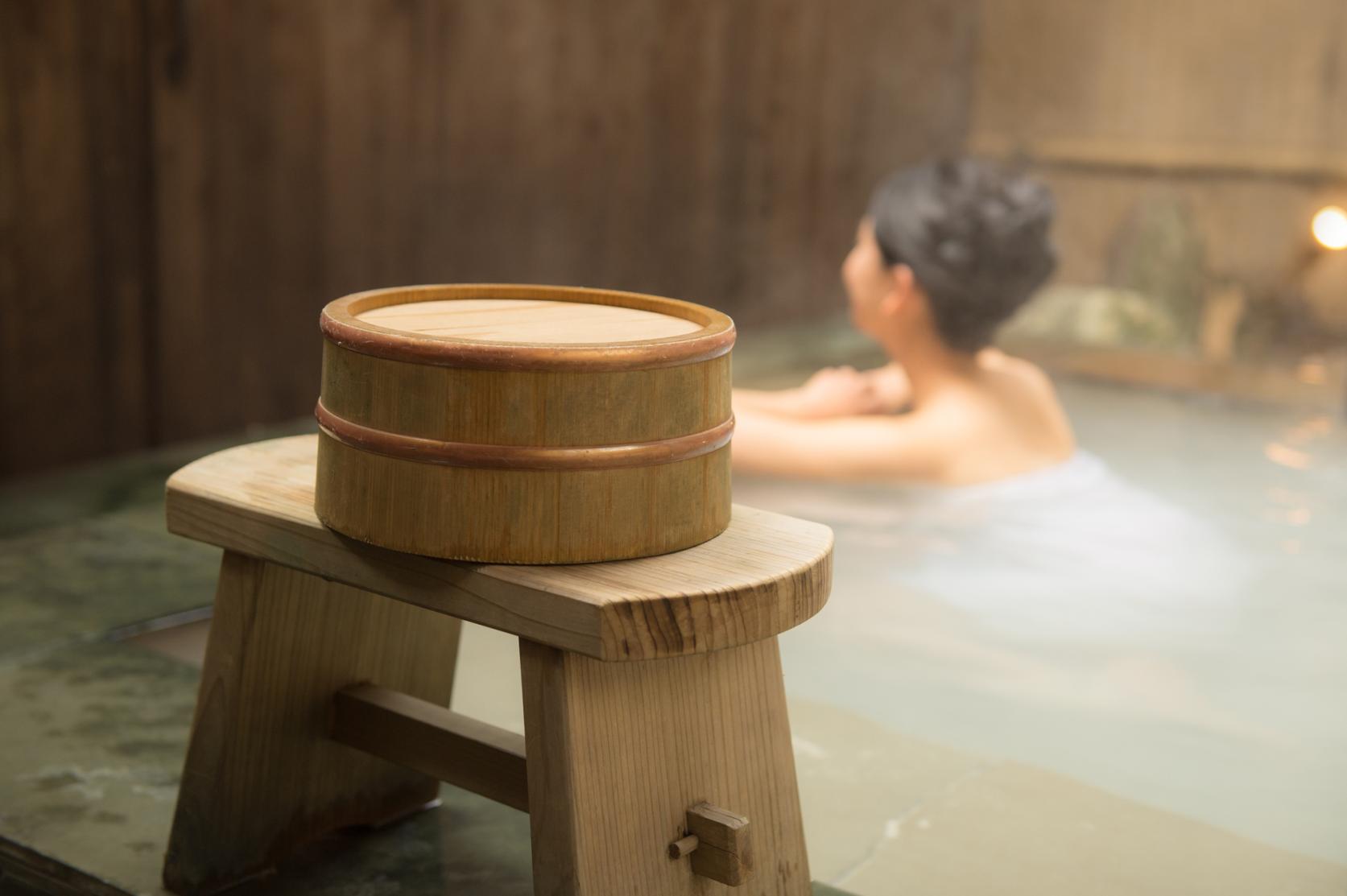
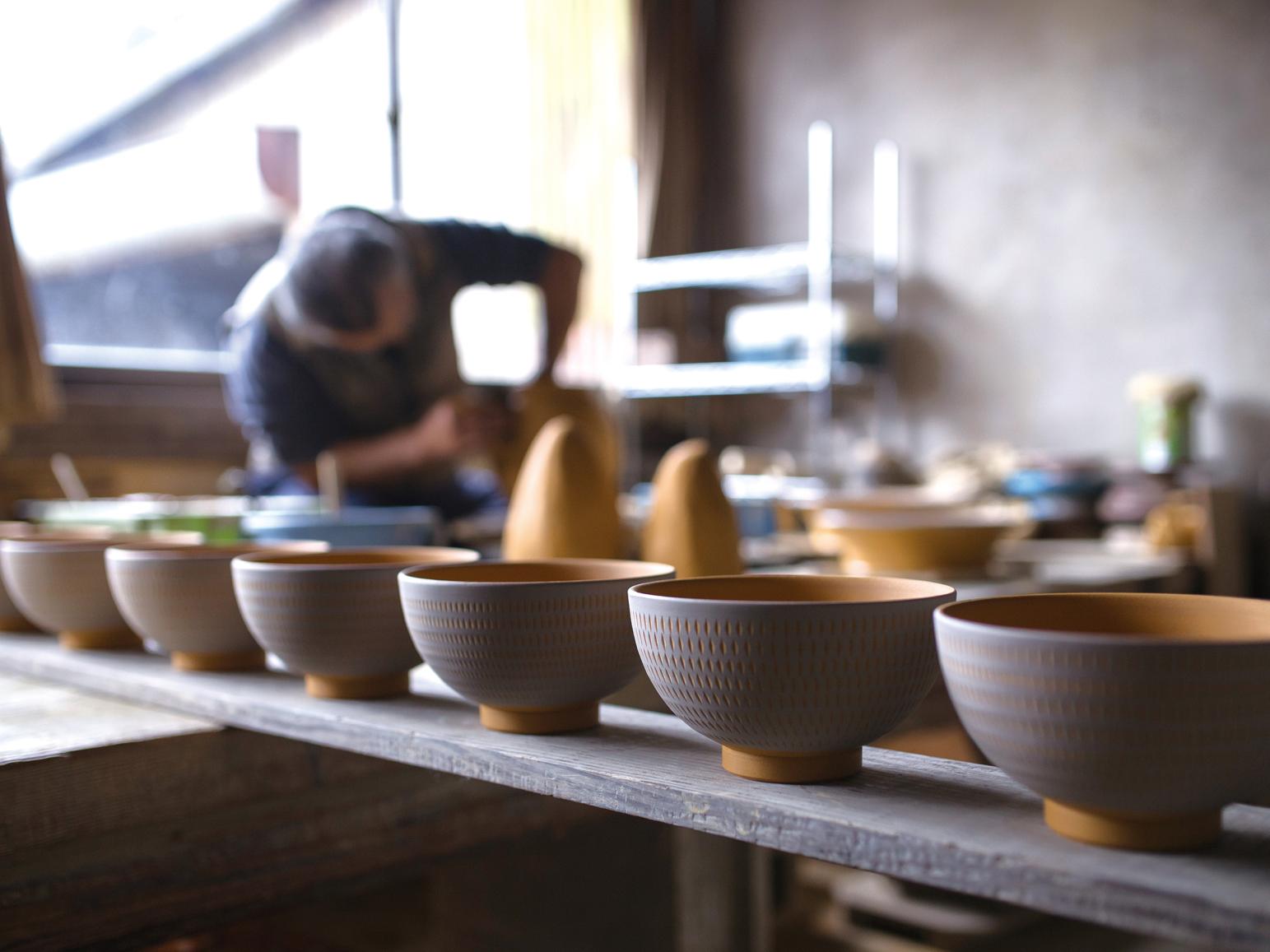
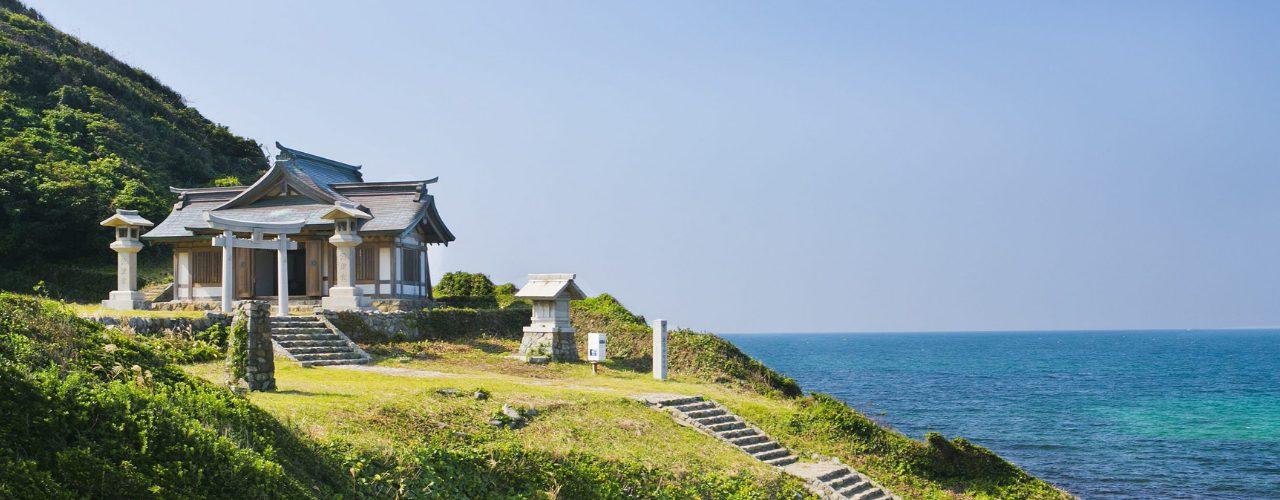
![[2025] Strawberry Picking Spots in Fukuoka-1](https://www.crossroadfukuoka.jp/storage/special_features/49/responsive_images/9ZHgrqvQdpH8tM4IRF54DXu0aPBF3YGGkj5WOTGc__1673_1115.jpg)
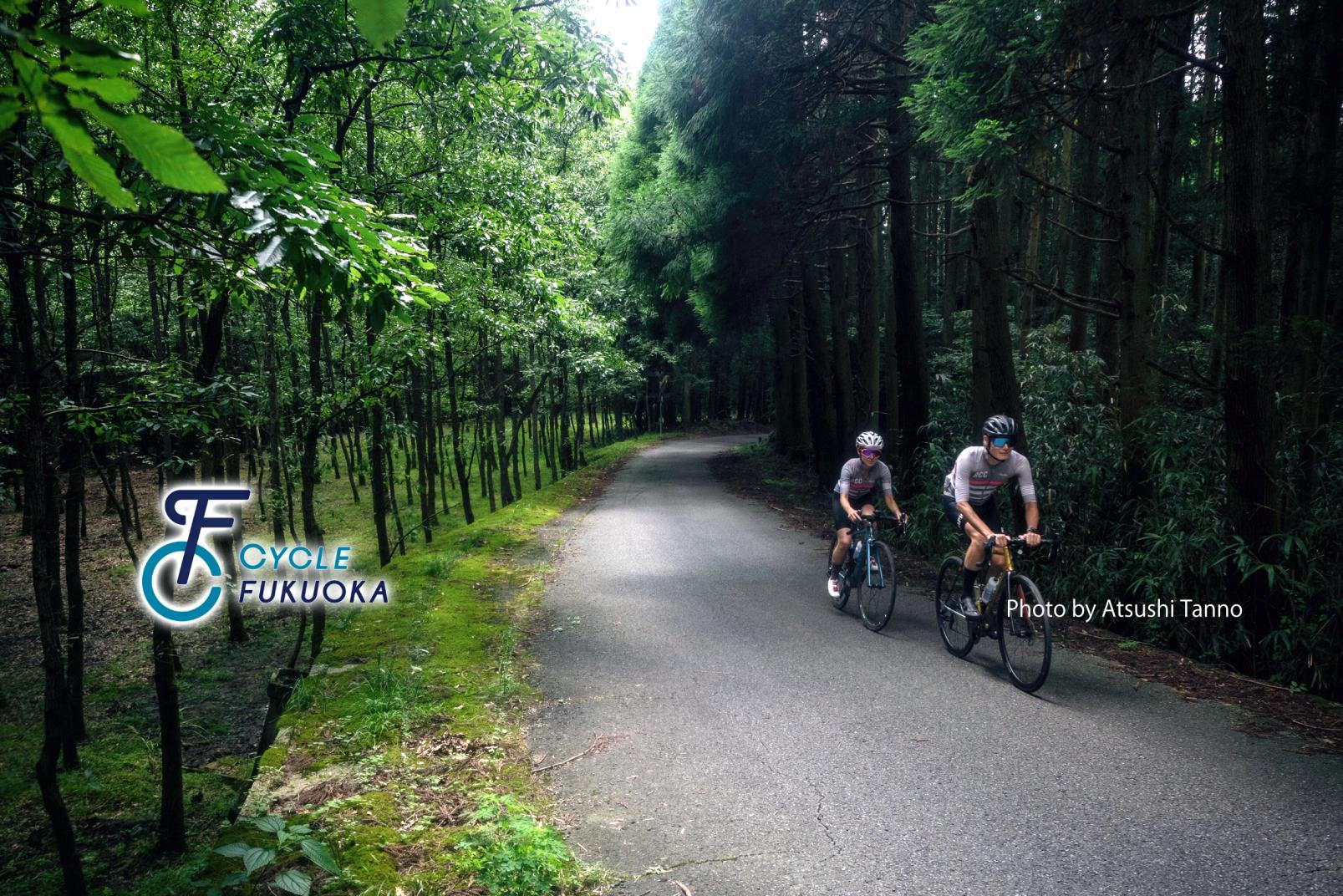
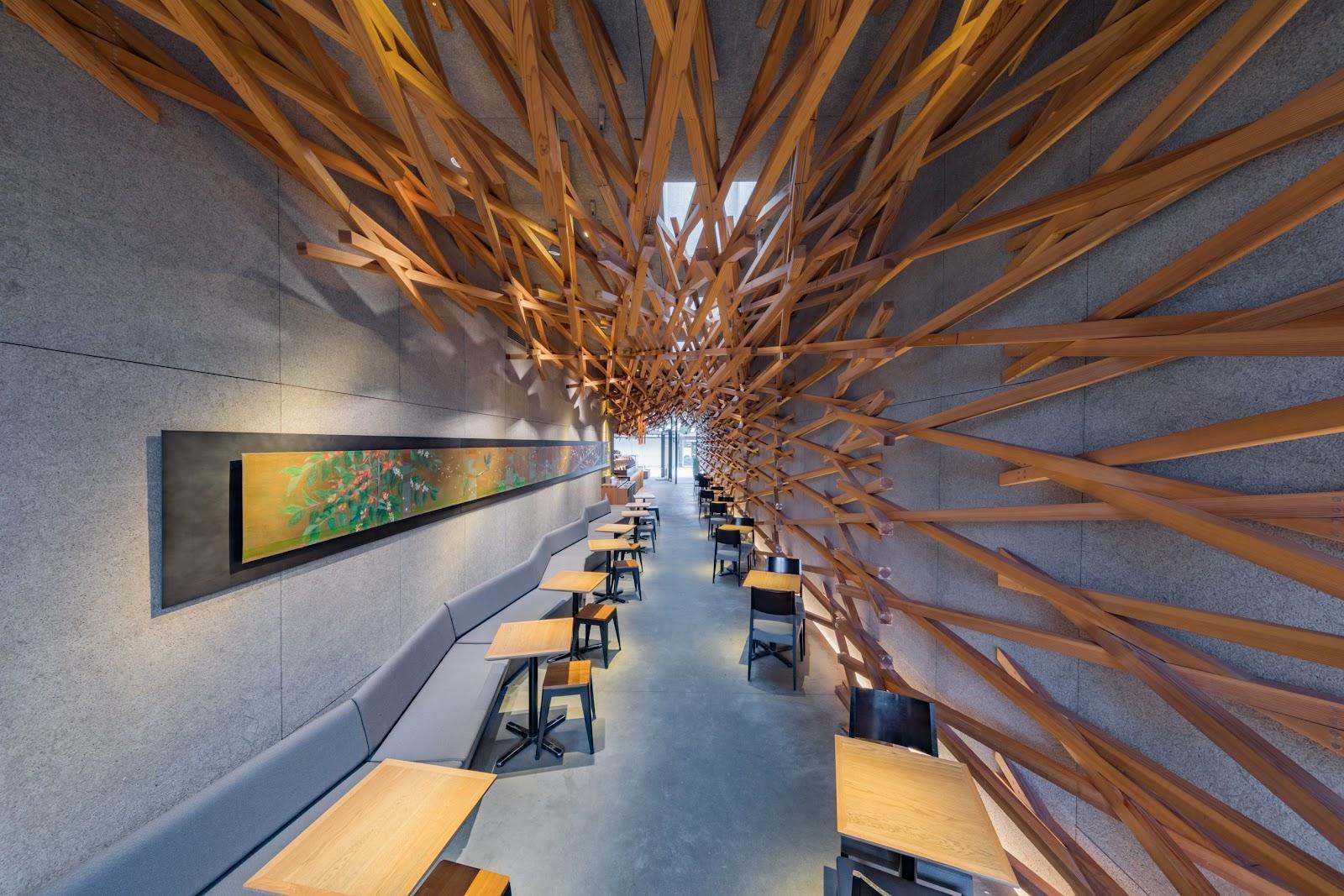
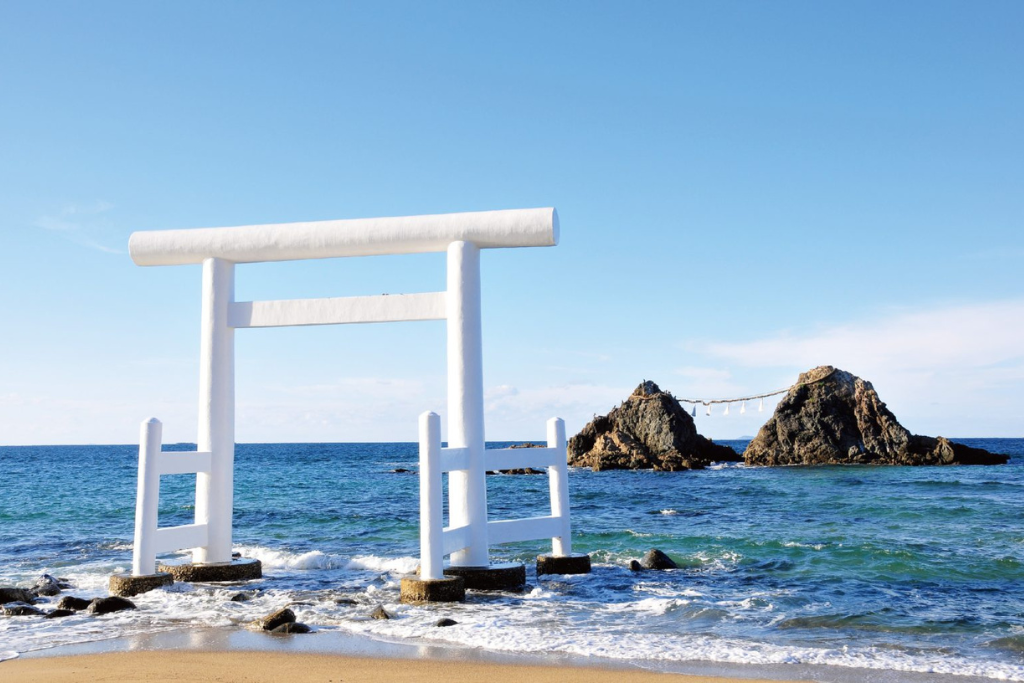
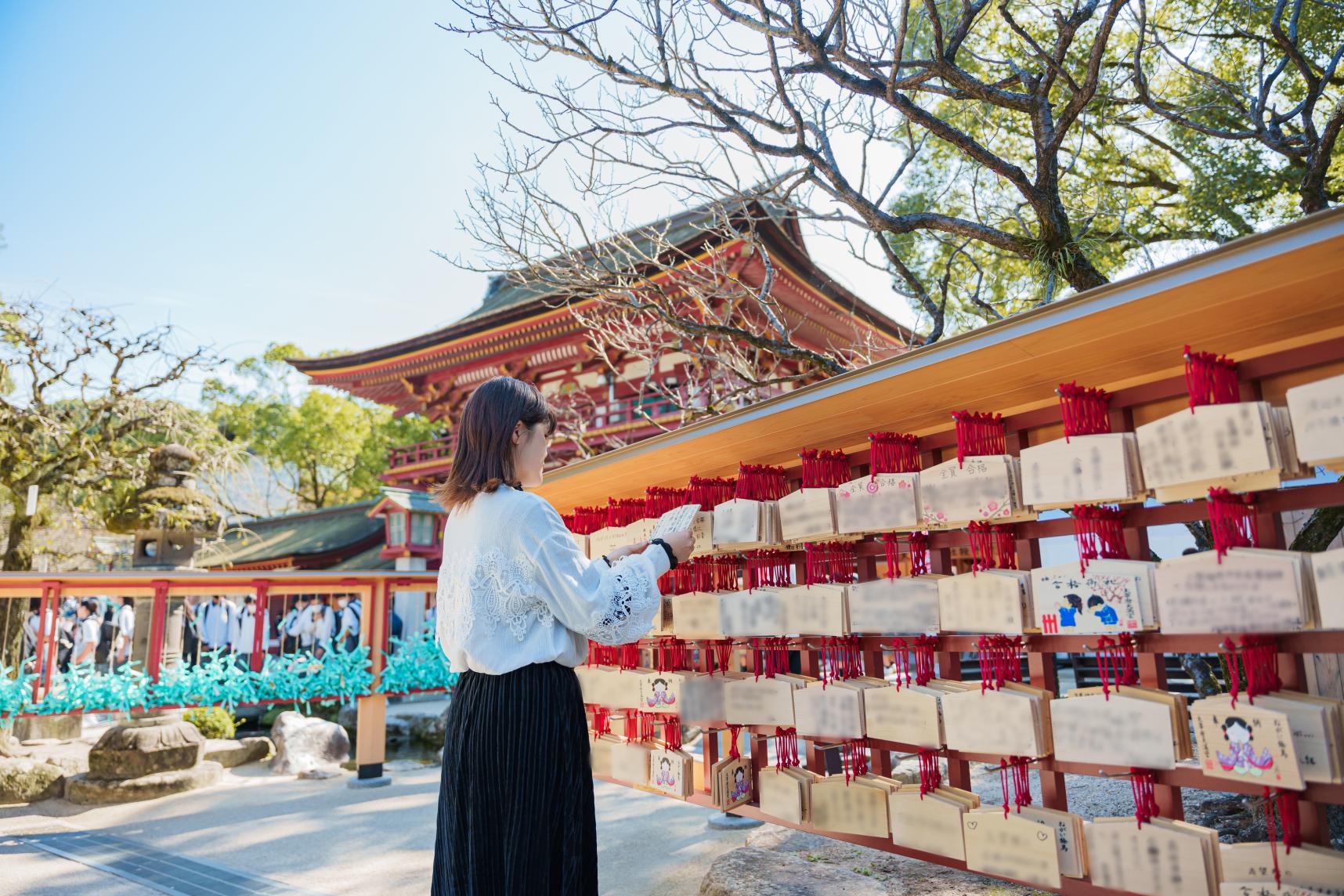
![[2024 Edition] Filled with blessings! The ultimate Fukuoka power spots to bring you happiness.-1](https://www.crossroadfukuoka.jp/storage/special_features/320/responsive_images/6SsCvBDXBhlZoAGUgarTOpZpEaEwsIqsWzSxW8cw__1289_856.png)